by Alan K. Lee
In August 2019, on a long road trip from our home near Portland, Oregon, my wife and I travelled to both Banff and Jasper in the Canadian Rockies. We had been to Banff before, but had never visited Jasper National Park.
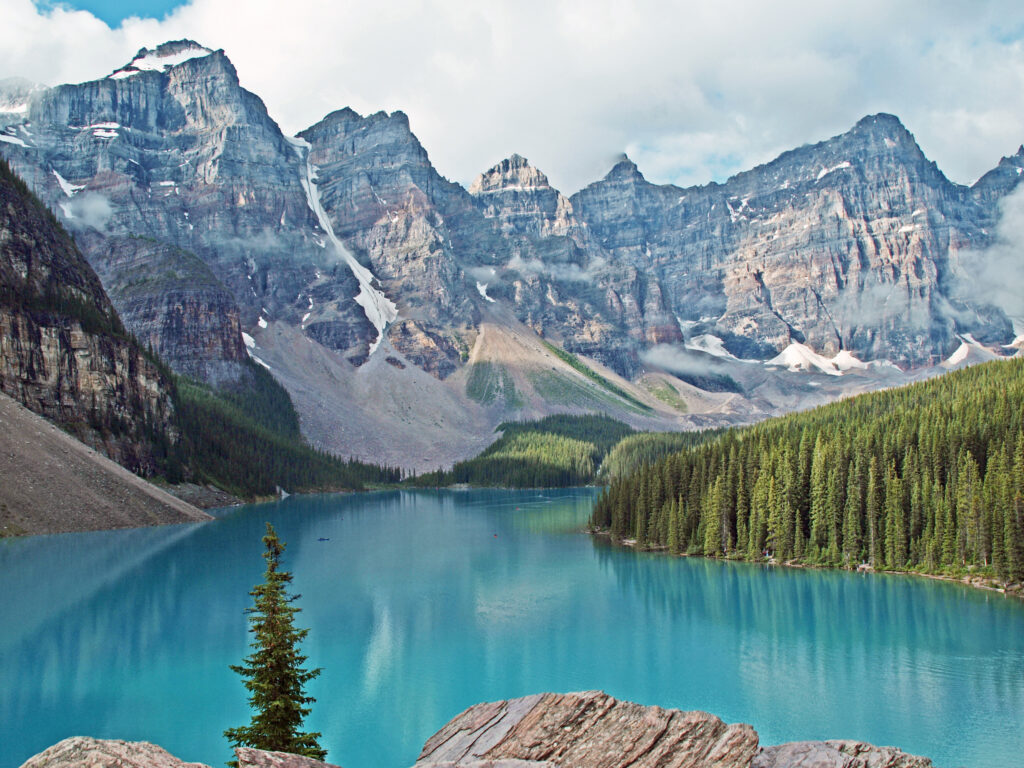
We spent a few days exploring Canmore, just outside of Banff National Park, and the town of Banff, then visited Moraine Lake, Johnston Canyon, and Lake Louise before heading north into Jasper National Park on the Icefields Parkway. (Click here to read about our time in Banff).
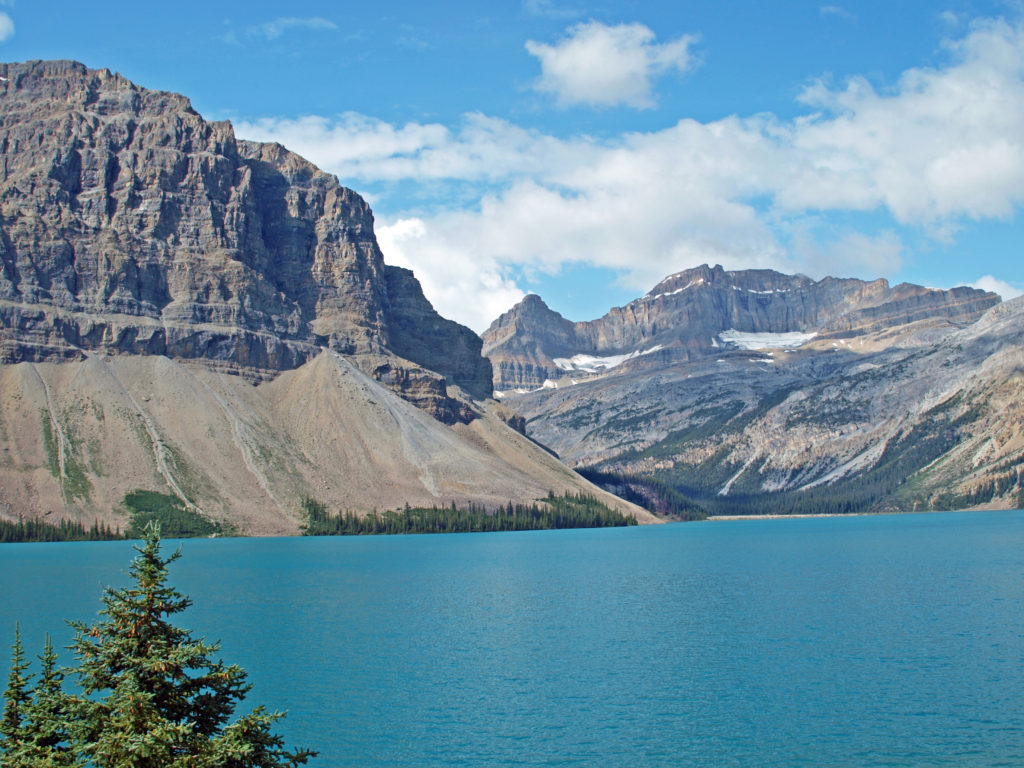
The Icefields Parkway parallels the Continental Divide from just north of Lake Louise to the town of Jasper. It is without question one of the most scenic drives I’ve ever taken. Jagged peaks, glaciers, pristine lakes, spectacular waterfalls – it has it all.
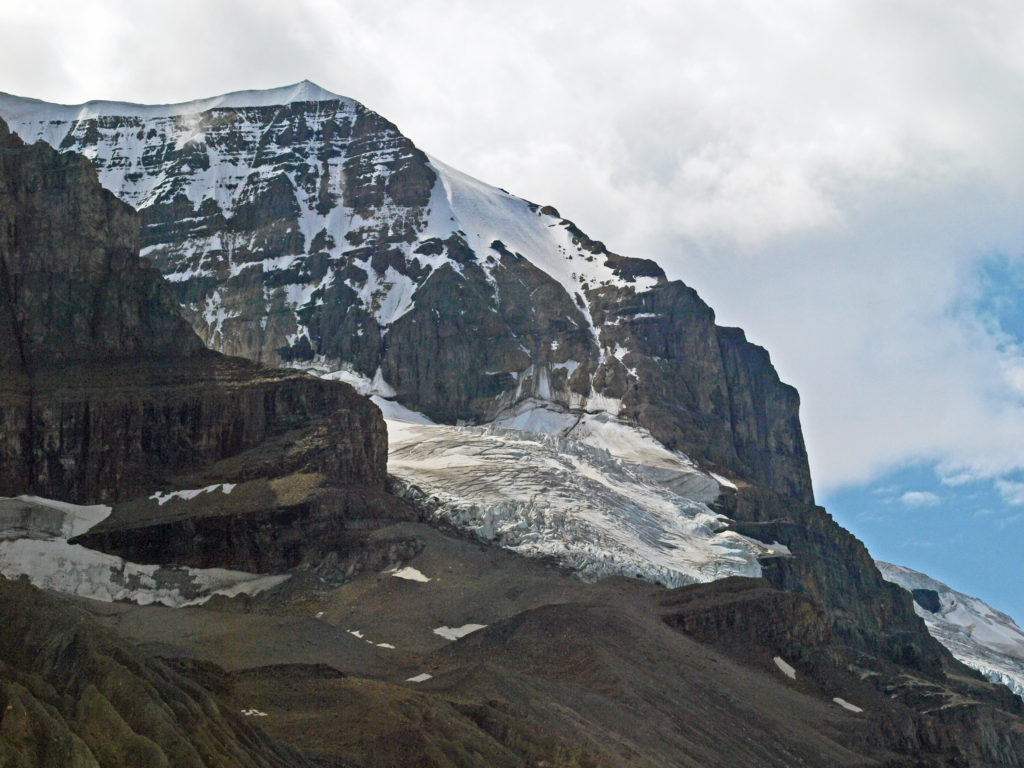
From the beginning of the Icefield Parkway, just north of Lake Louise, the country felt wilder, more remote, and more removed from civilization. While Banff and Lake Louise seem relatively civilized because of the facilities, and the crowds, Jasper National Park is another animal. You won’t completely leave the crowds behind, of course, but you don’t have to venture very far off the road to find places with little or no trace of civilization.
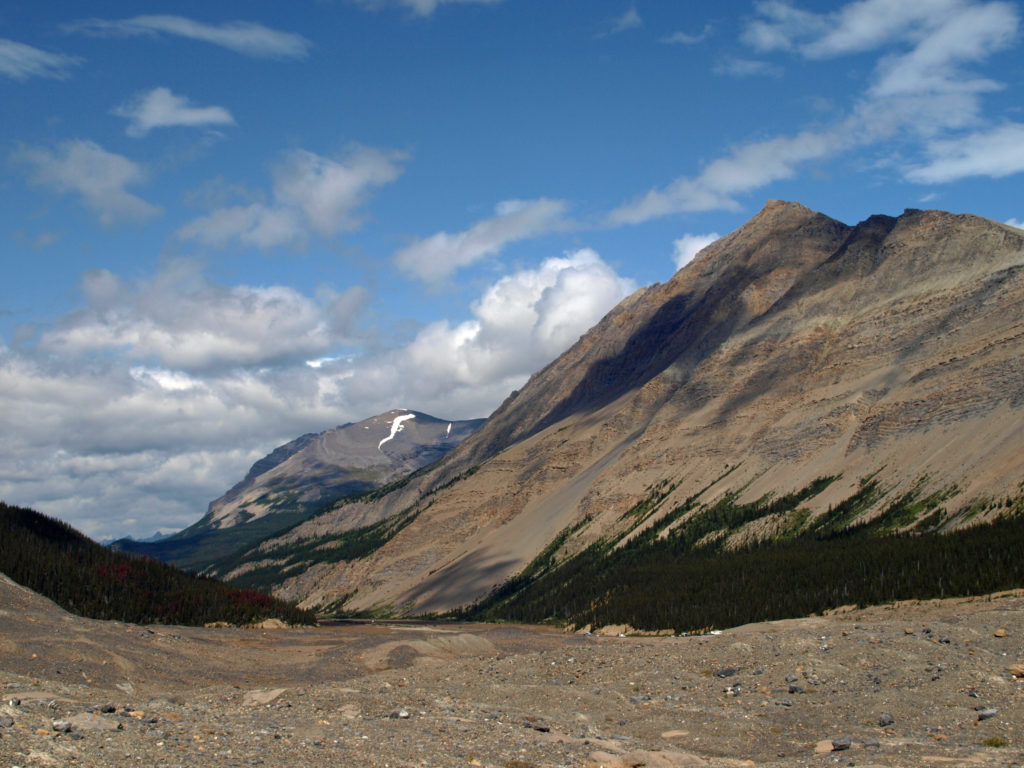
Although it is only 143 miles (230 km) long and can be driven in less than three hours, you’ll want to spend a full day or more exploring the many scenic viewpoints, hiking trails, lakes, rivers, glaciers, waterfalls, and wildlife viewing opportunities that the Parkway offers.
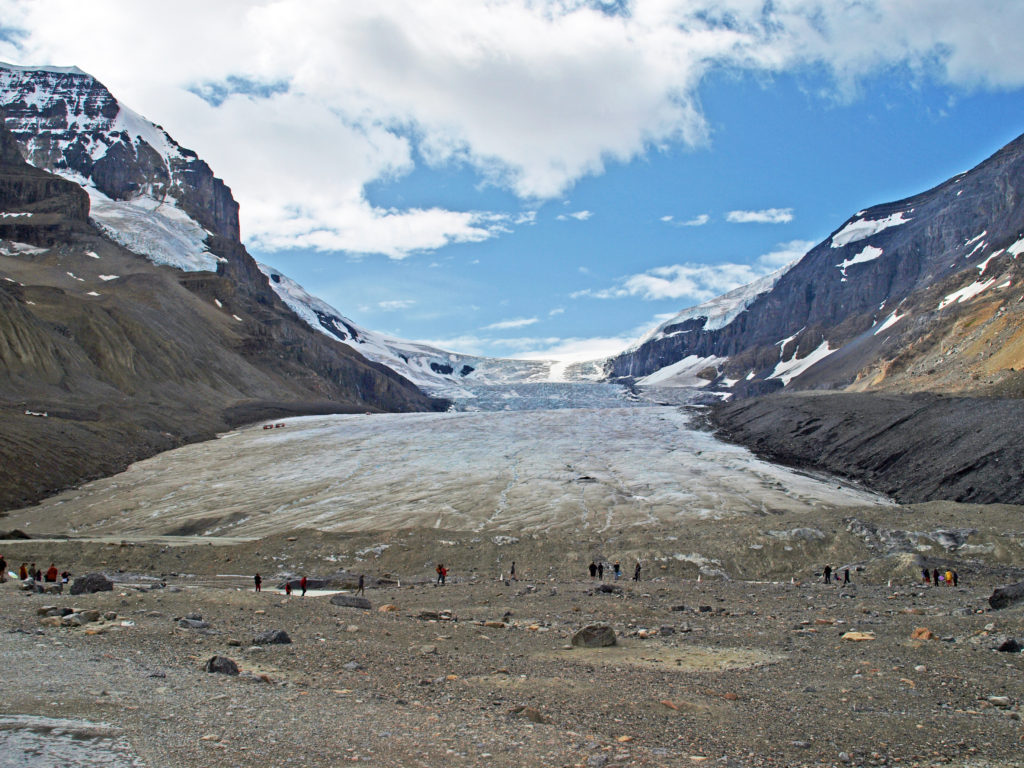
We didn’t have enough time to stop at every viewpoint along the parkway, much less do any serious hiking or exploring. (If we go back, we’ll budget our time more wisely because there is so much that we missed on this trip). Our first stop after leaving Banff and entering Jasper came at the Icefield Centre, where the Athabasca Glacier drops down from the Columbia Icefield that straddles the Continental Divide.
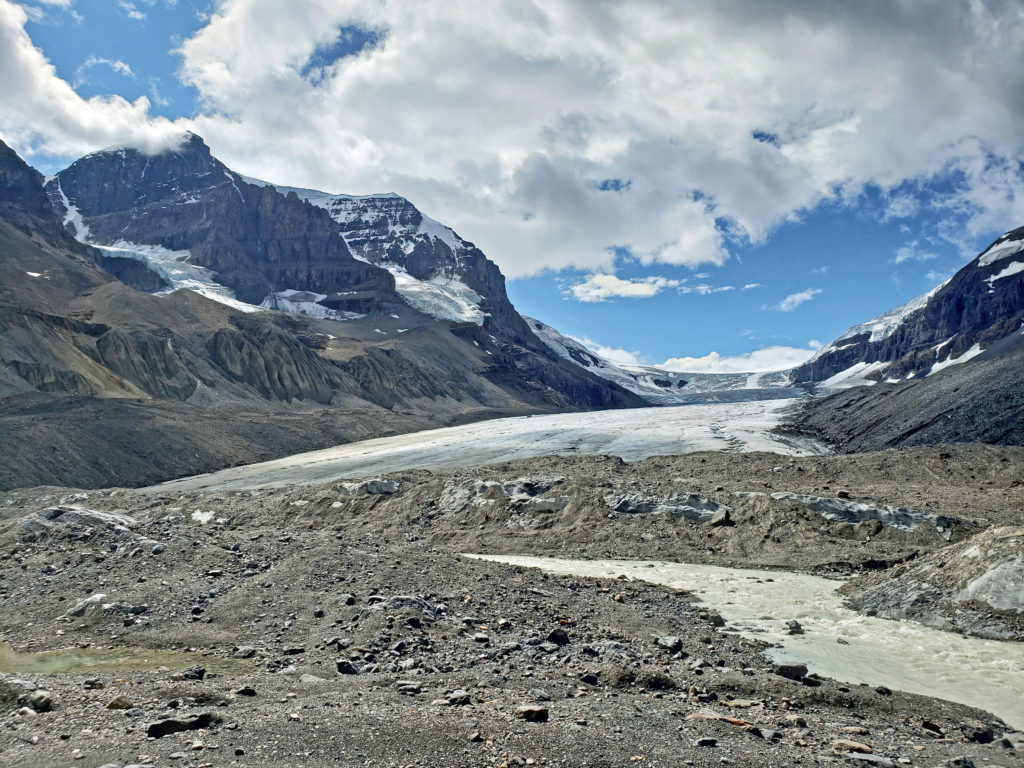
From the Icefield Centre, visitors can take tour busses up to the Athabasca Glacier, then onto the glacier itself in special sno-coaches equipped to deal with the unique terrain presented by the surface of the glacier. You can also take a guided hiking tour onto the surface of the glacier.
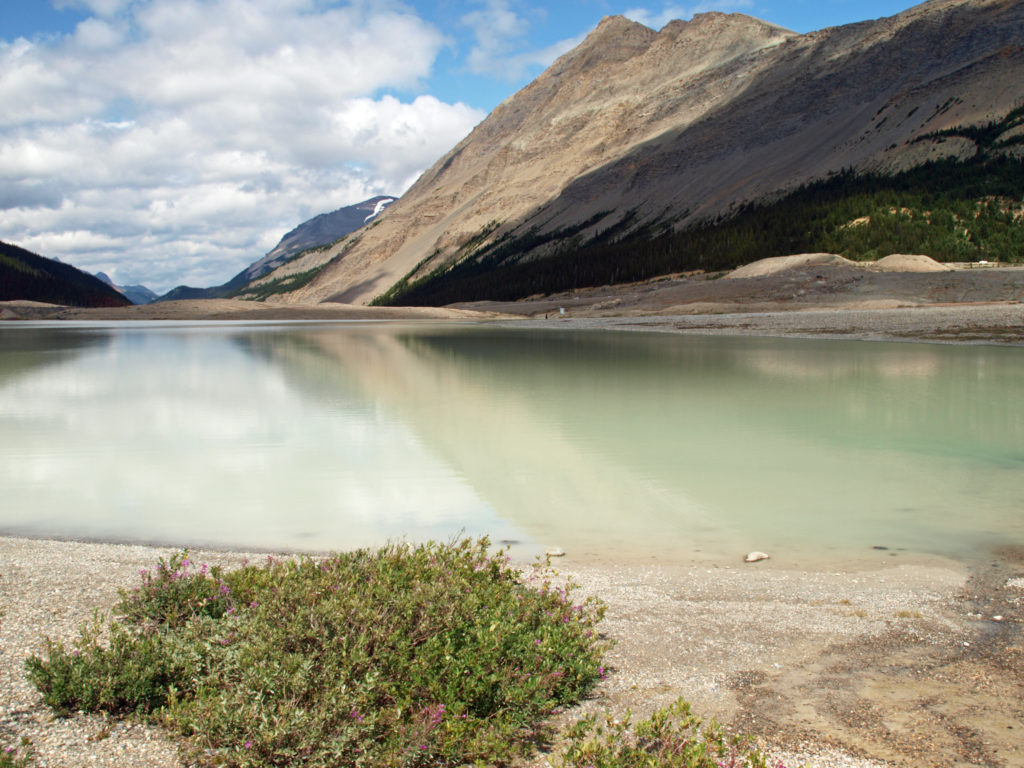
We opted instead to hike to the terminal moraine of the glacier, where we could get a good view of the entire glacier as it descends from the massive Columbia Icefield. We then drove to nearby Sunwapta Lake, fed by runoff from the glacier. The whole area is beautiful, a bit unworldly, and truly magnificent.
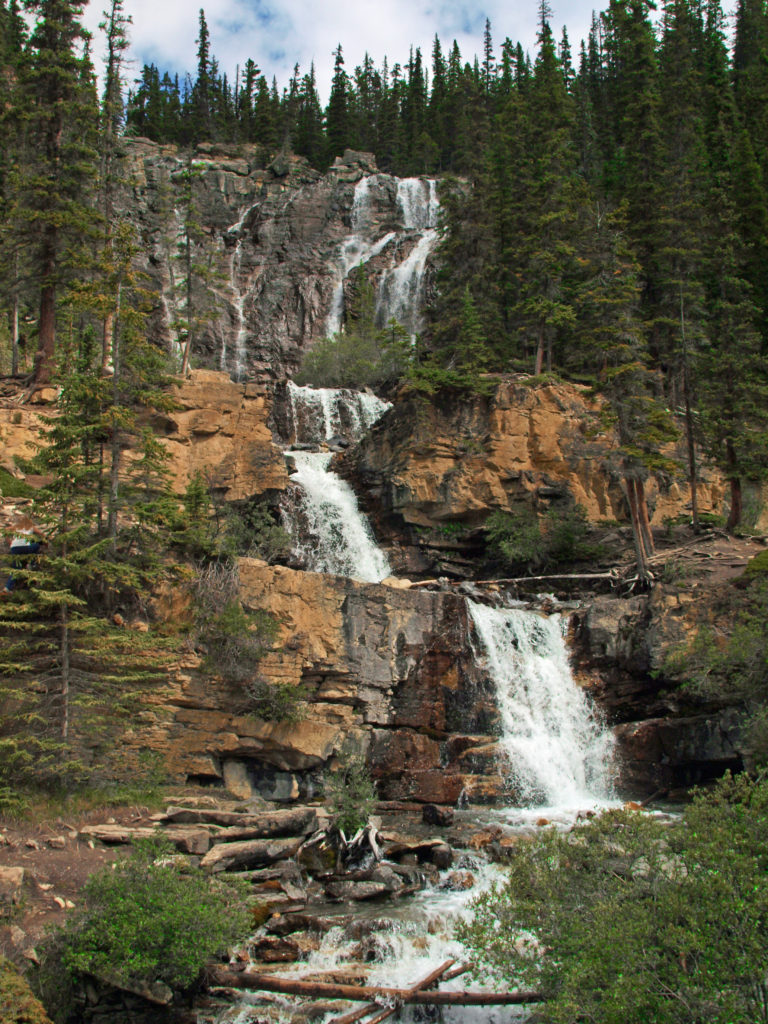
From the Icefield Centre, the parkway follows the Sunwapta River north. We stopped for a short time at Tangle Falls, a beautiful series of small falls, which is immediately adjacent to the highway, no hiking required.
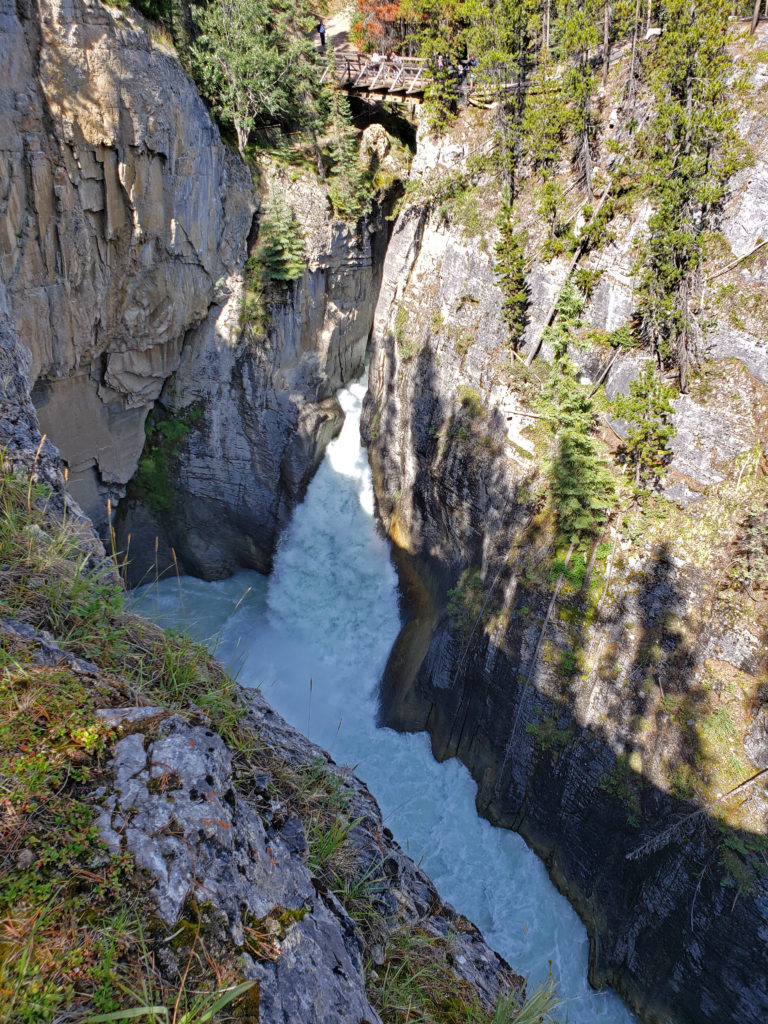
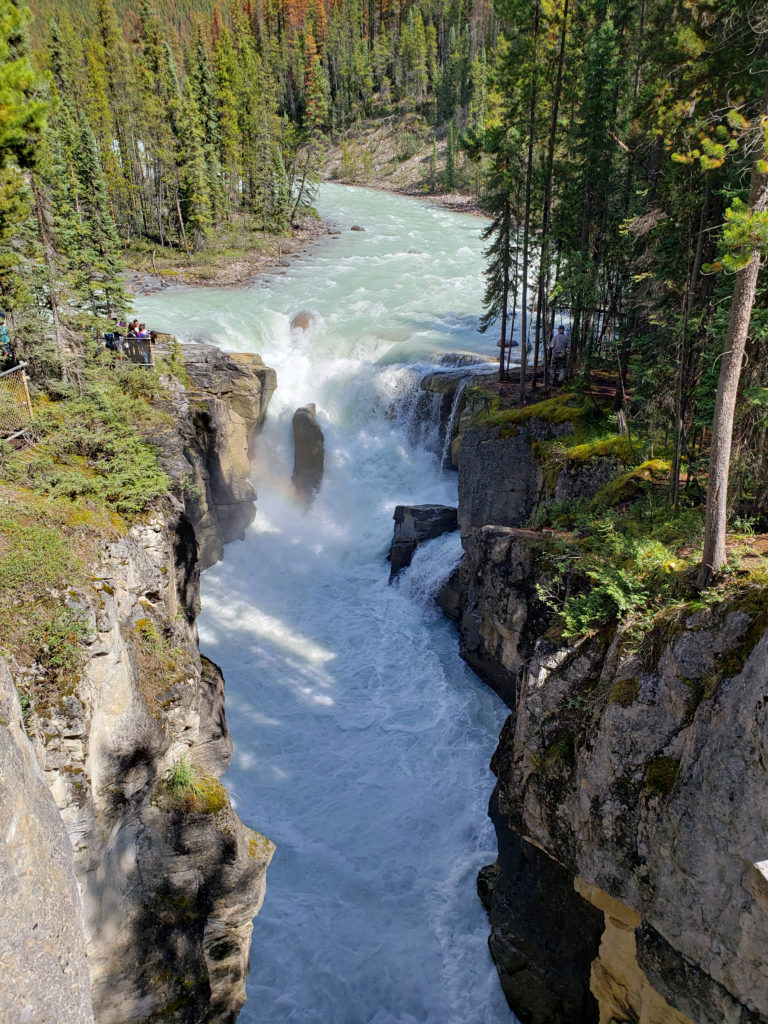
Then it was on to Sunwapta Falls. A short walk of a few hundred feet brings you to the top of the falls, where the Sunwapta River drops into a narrow canyon. The Sunwapta is a sizable tributary of the Athabasca River and the volume of water funneling into such a narrow passage is very impressive to see, and hear. The best view is from a pedestrian bridge that crosses the riverjust below the main falls. There is also a much less traveled 1¼ mile trail to Lower Sunwapta Falls, where the gorge empties out into the broad Athabasca Valley.
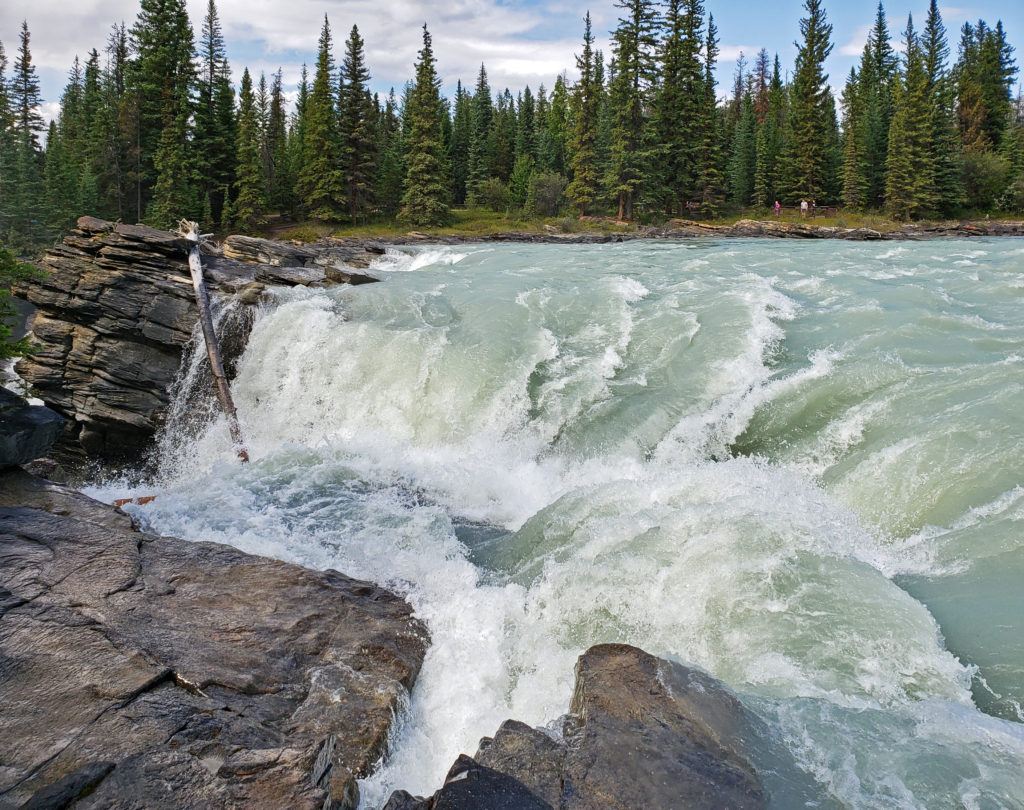
Our next stop was Athabasca Falls. Here Hwy 93A splits off from the Icefields Parkway. Like at Sunwapta Falls, the river here also drops into a narrow gorge, and a pedestrian bridge above the gorge gives a fantastic view of the falls. Before we left on our trip I saw a video of a black bear crossing that same bridge, full of tourists. Some of the people froze in place and some ran for their lives. The bear passed within inches of some of the people, paying them no mind, and went on its way.
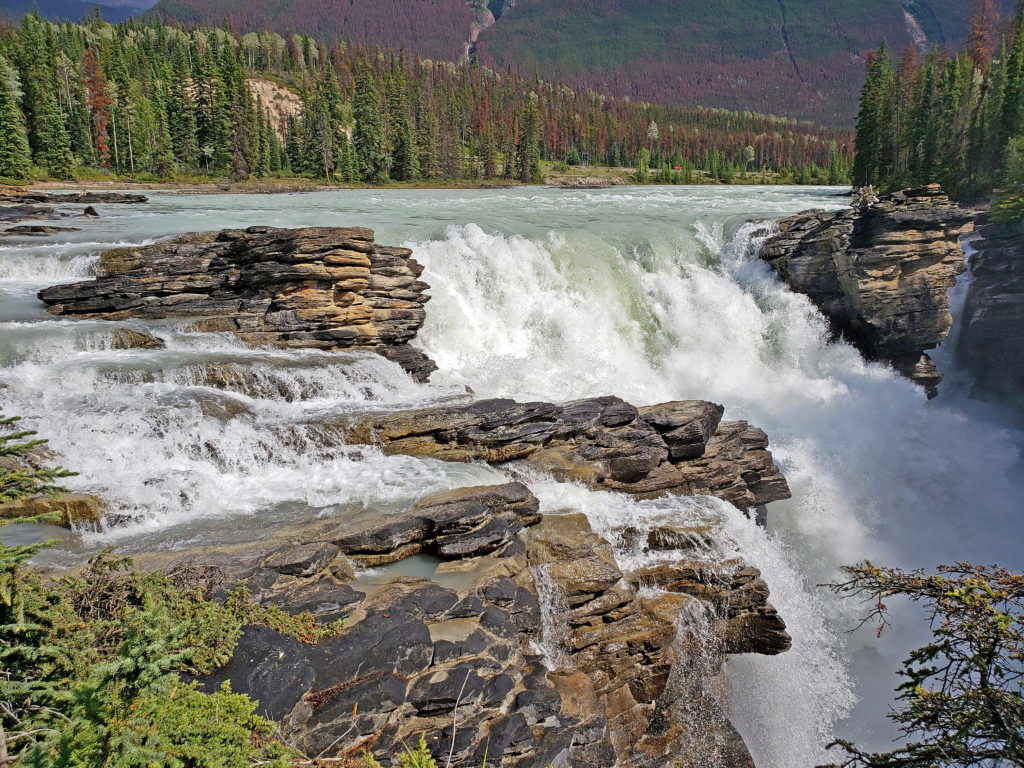
If Sunwapta Falls was impressive, and it was, the Athabasca River here is bigger, the volume of water is greater, and the noise of the falls is deafening. Awesome is the only word for it. Athabasca Falls is world famous for a reason. Many highly hyped tourist attractions turn out to be less than advertised, but Athabasca Falls is not one of them.
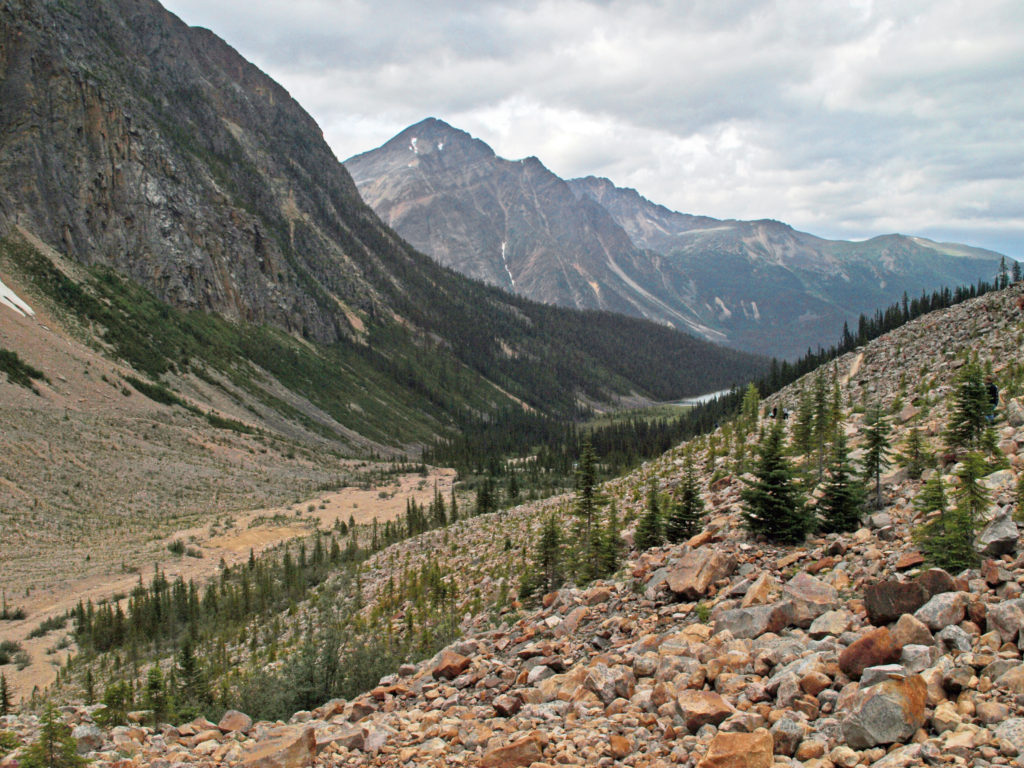
After leaving Athabasca Falls, we continued north on Hwy 93A instead of returning to the Icefields Parkway and followed it about ten miles north to the junction of the road leading to the Mount Edith Cavell Day Use Area. The road up has a half dozen very sharp switchbacks, and trailers and RVs over 25′ are not allowed. (There is a parking area at the base of the road where you can leave your trailer, if you want to unhitch.) The road is paved, though, and fine for passenger vehicles and smaller RVs. The day use area is at the end of the road, directly below the summit of Mount Edith Cavell.
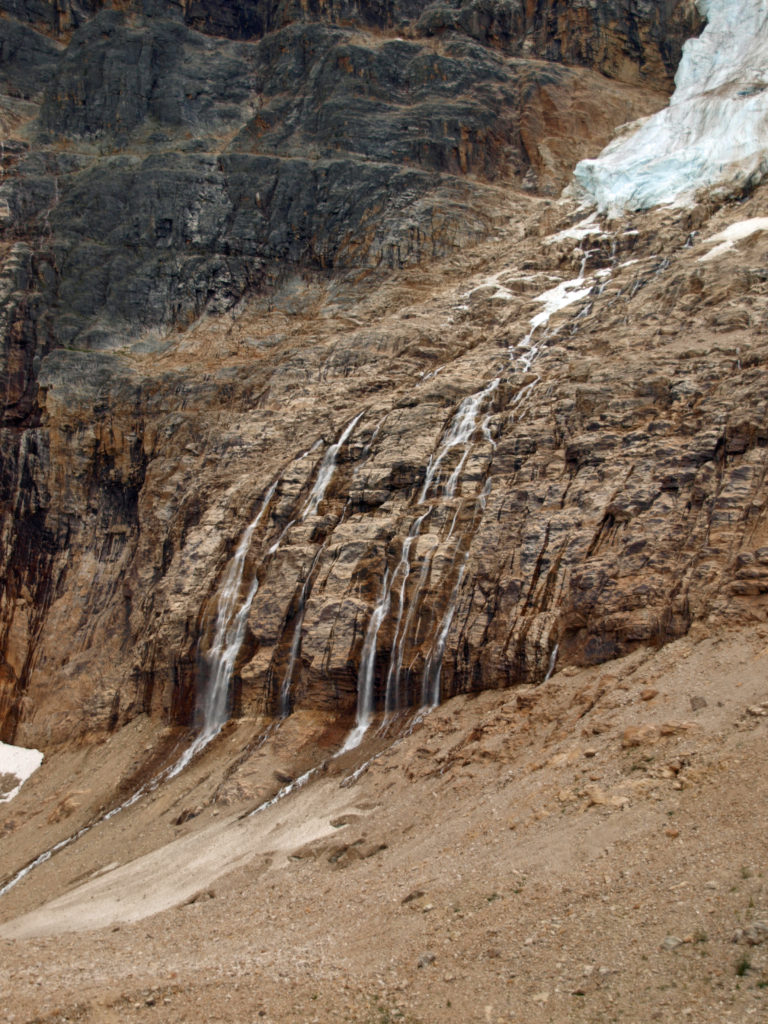
The mountain is named for a British nurse who helped hundreds of British, French, and Belgian soldiers escape German-occupied Belgium in World War I. She was arrested, tried, and executed by the Germans in 1915.
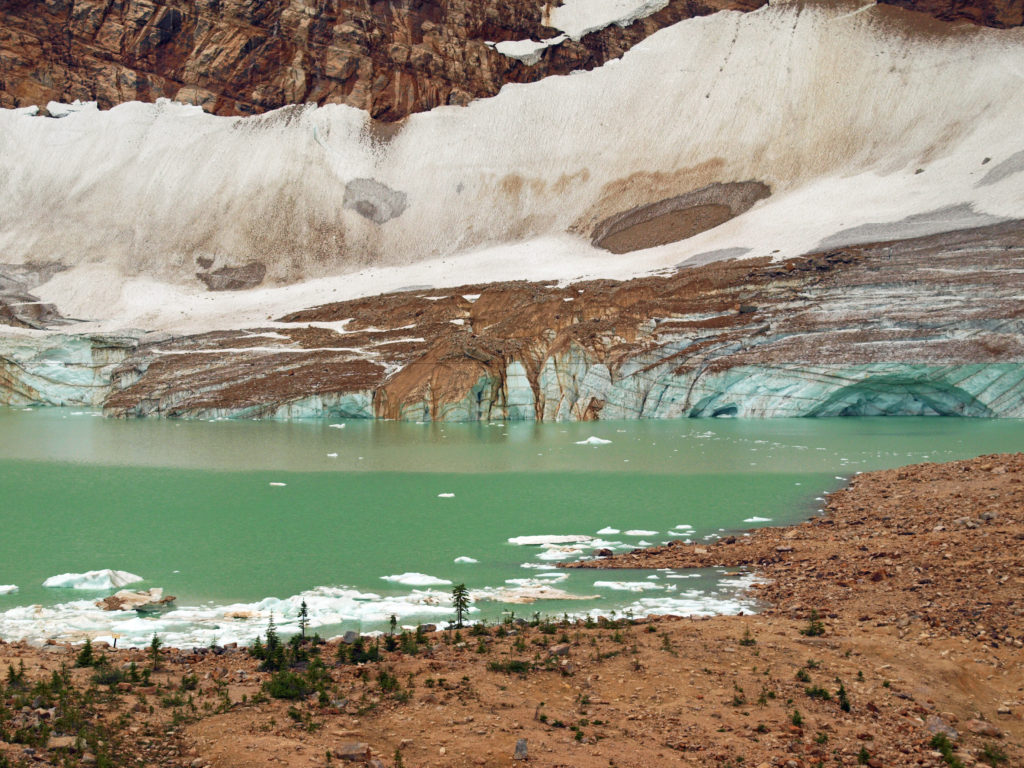
From the day use area, a short but steep trail leads to a viewpoint that looks down to Cavell Pond and up nearly 5000 vertical feet to the 11,047′ summit. The lake was still partially ice covered when we were there in the middle of August.
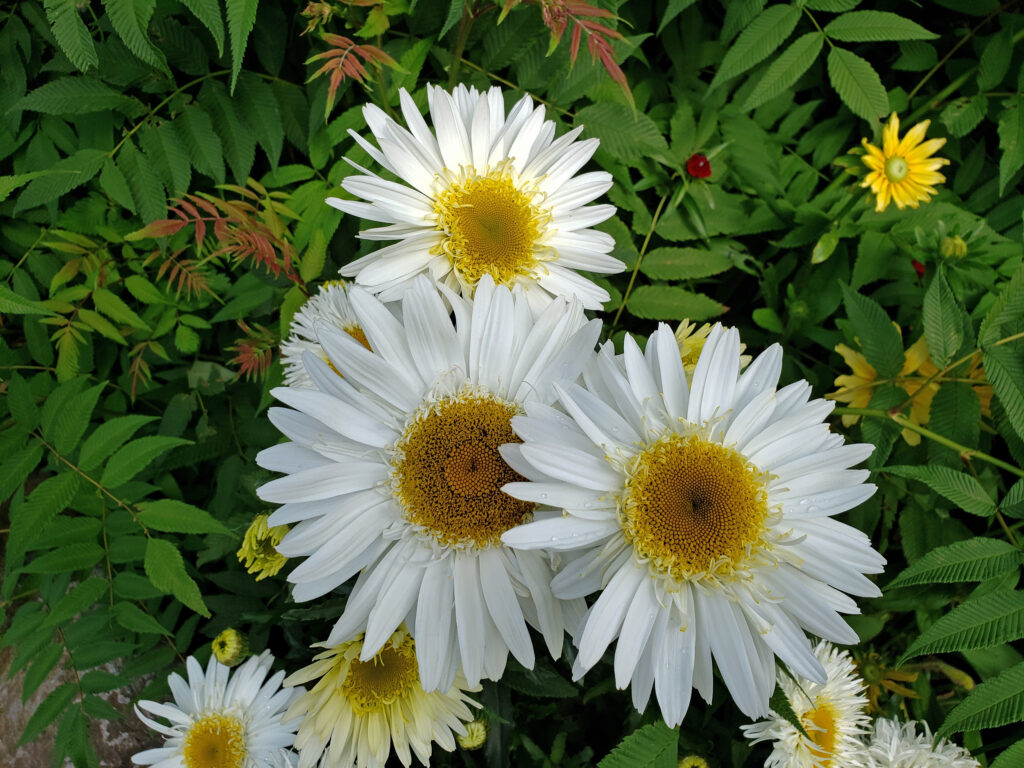 The Icefields Parkway ends at the town of Jasper, a smaller, less crowded, and lower key version of Banff. There are abundant restaurants, pubs, galleries, and shops there, but accommodations are limited, and hotels and motels are expensive. Book your stay well in advance. We opted for staying in a travel trailer at an RV park 30 miles (48 km) from Jasper, just outside the park boundary, because that was the only thing available through Airbnb when we were planning our trip. It was a little inconvenient, but in the end it worked fine.
The Icefields Parkway ends at the town of Jasper, a smaller, less crowded, and lower key version of Banff. There are abundant restaurants, pubs, galleries, and shops there, but accommodations are limited, and hotels and motels are expensive. Book your stay well in advance. We opted for staying in a travel trailer at an RV park 30 miles (48 km) from Jasper, just outside the park boundary, because that was the only thing available through Airbnb when we were planning our trip. It was a little inconvenient, but in the end it worked fine.
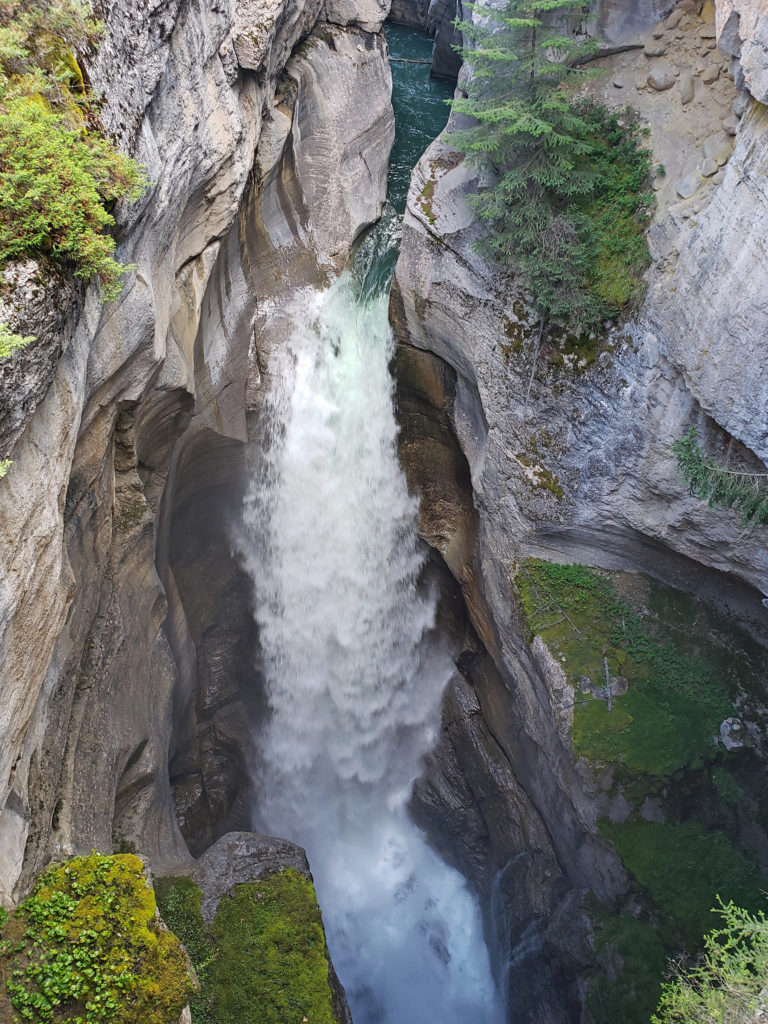
No visit to Jasper National Park should go without a stop at Maligne Canyon, just a few miles northeast of town. Here the Maligne River flows through a narrow slot canyon. In some places the canyon is more than 150 feet deep and only 10 feet wide. It’s an amazingly place, not to be missed.
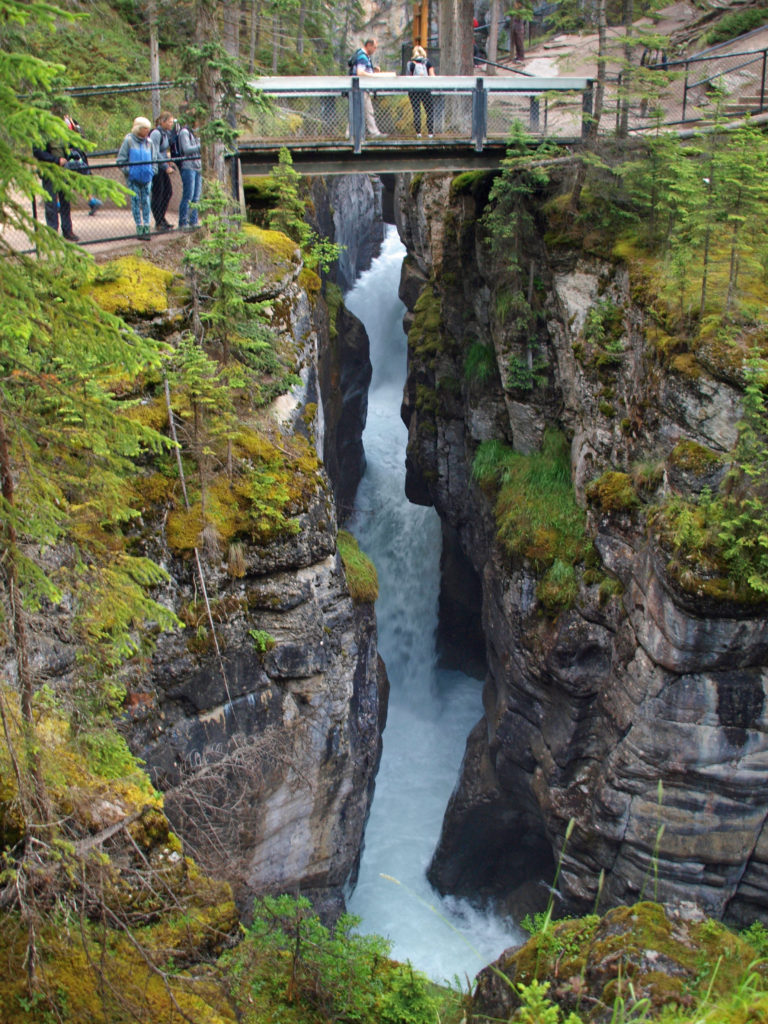
To get to Maligne Canyon from Jasper, take Hwy 16 toward Edmonton. Just outside of town, turn right onto Maligne Lake Road and cross the Athabasca River. A few miles down the road you will first come to Maligne Canyon Viewpoint, then the Maligne Canyon Trailhead parking area.
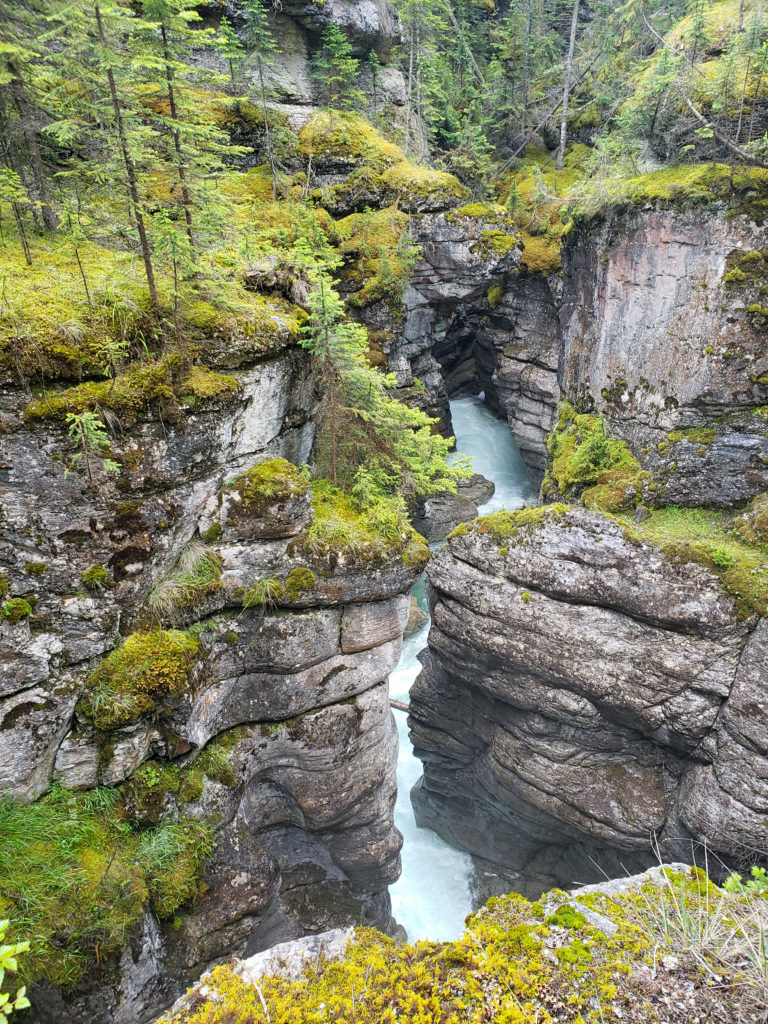
From the trailhead parking area, look to the southeast and you’ll see, strangely enough, a restaurant (Maligne Canyon Wilderness Kitchen). The trail begins there. A short ways down the trail you will come to First Bridge. It spans the canyon immediately downstream of an impressive waterfall.
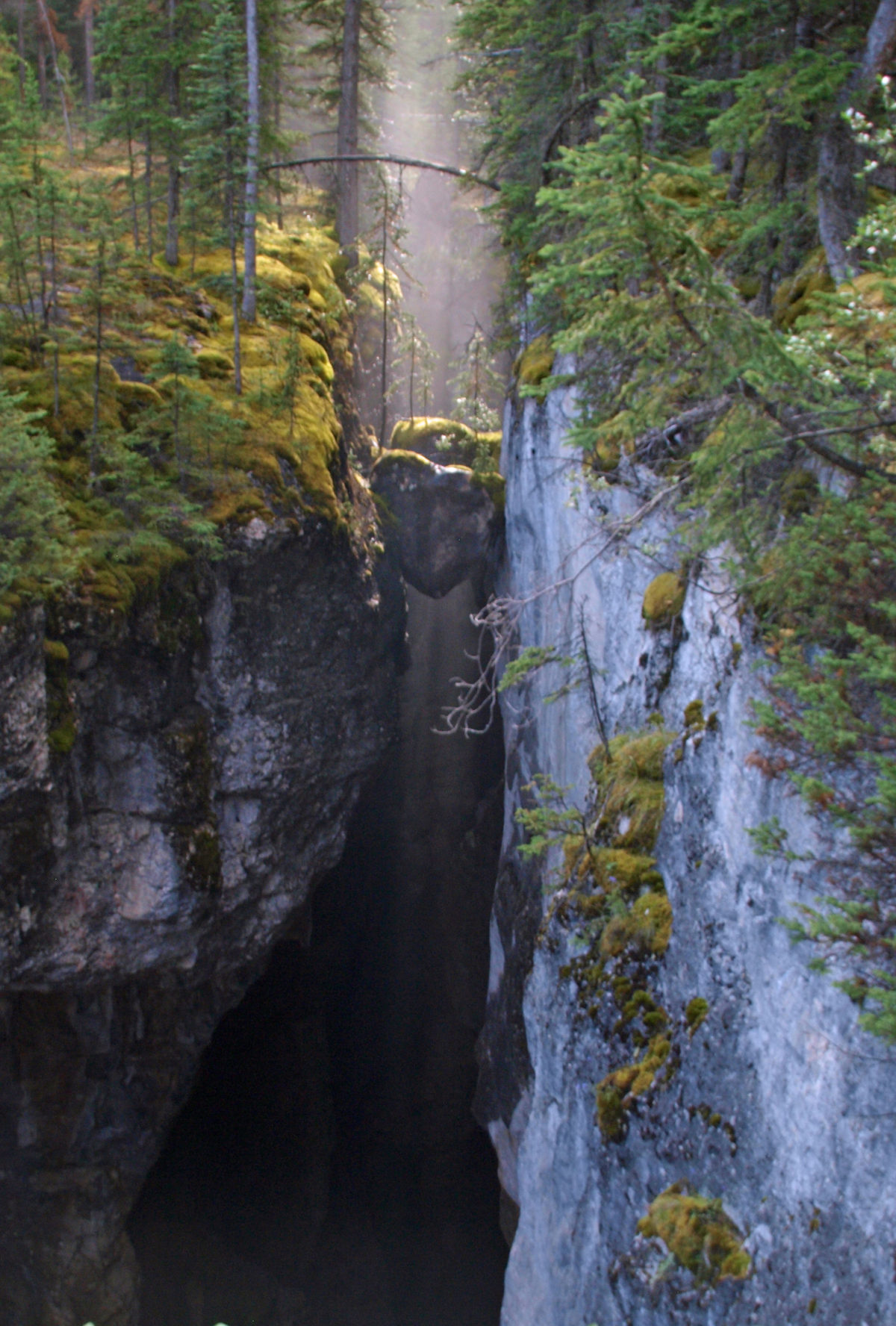
There are a total of five foot bridges that cross the Maligne River. The first four all give incredible views down into the canyon. The trail along the rim of the canyon also offers numerous viewpoints. Words simply cannot describe this place.
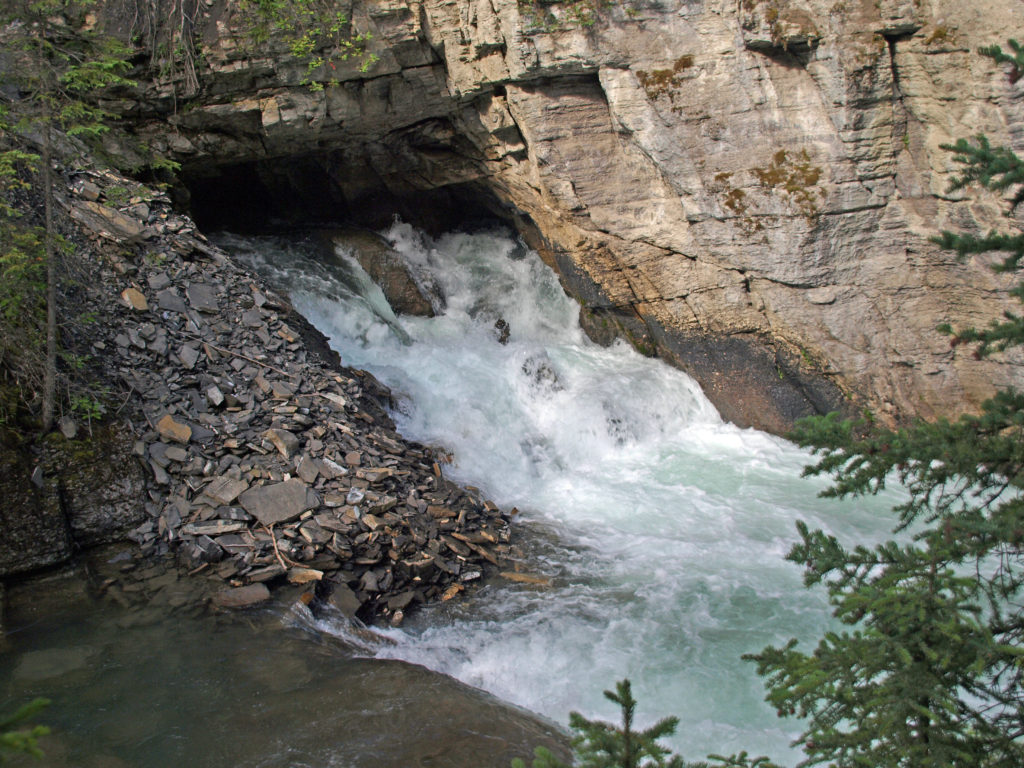
Because it is so spectacularly beautiful, Maligne Canyon can also be spectacularly crowded. Come early in the day (before 9:00) if possible to beat the tour bus crowd. The crowds thin out, though, below Second Bridge. Below Fourth Bridge the canyon opens up and becomes less spectacular, but still scenic. One way of avoiding some of the crowds, though a longer hike, is to start at the lower trailhead at Fifth Bridge and hike up the canyon.
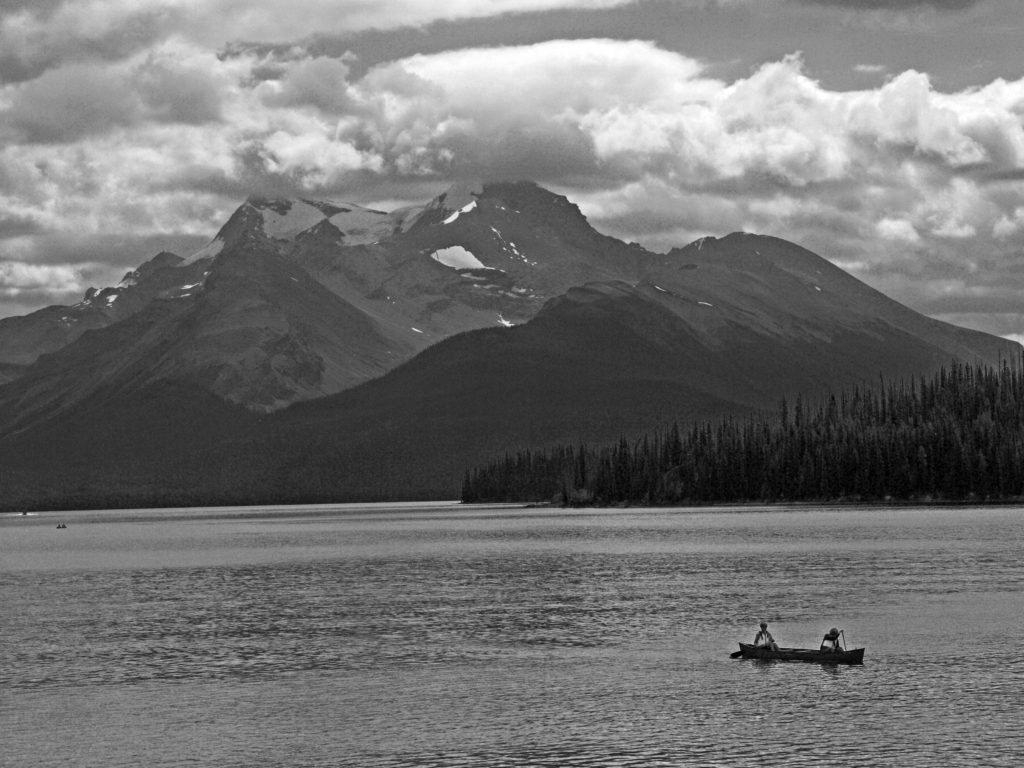
After spending most of the morning at Maligne Canyon, we drove the 25 miles south to Maligne Lake. There we did a short hike along the east shore of the lake. The north end of the lake is less scenic than the fjord-like southern end, but there are no roads beyond the north end of the lake. Tour boats take visitors part way down the lake, but we weren’t there at the right time of day to get good photos, so we opted to skip the boat ride this time, one of the many things we left for our next visit to Jasper.
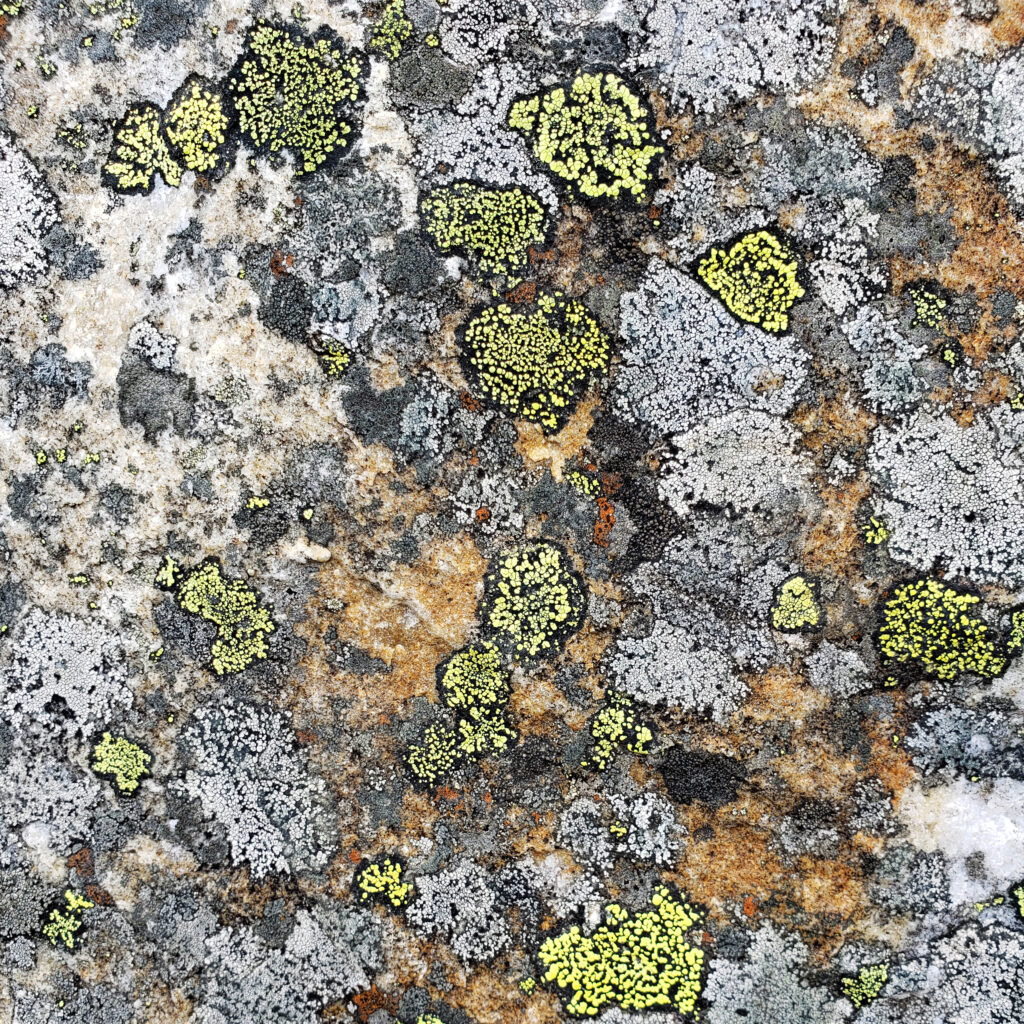
If you’re contemplating a visit to Jasper National Park, plan to spend at least five days. And you could easily spend longer. There’s a lot to see, as Jasper is a big place, larger than Yellowstone National Park. The two and a half days we had were not close to enough. If you want to see the Canadian Rockies and time is a constraint, my advice would be to skip Banff and focus on Jasper. Banff has it’s attractions, but Jasper is much less crowded and even more scenic. The Icefields Parkway website is a good starting point for planning your trip. Another good reference is the Jasper National Park website.
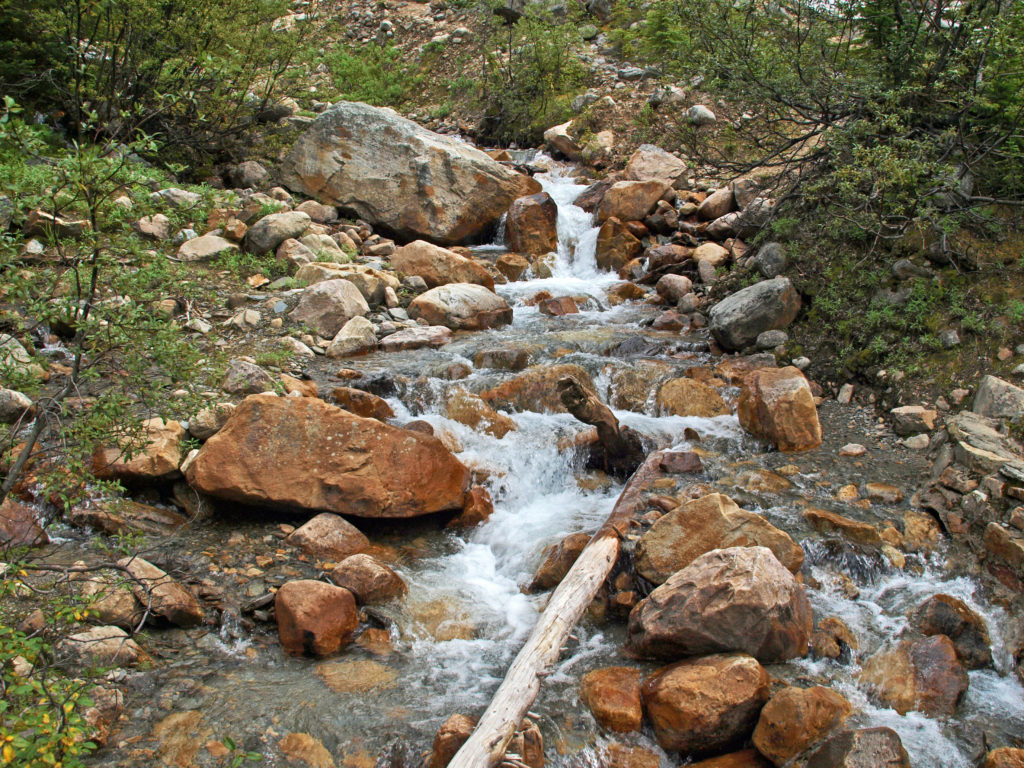
Originally posted September 19, 2019 as The Icefields Parkway. Edited, updated, and re-posted December 26, 2022.
All photos © Alan K. Lee

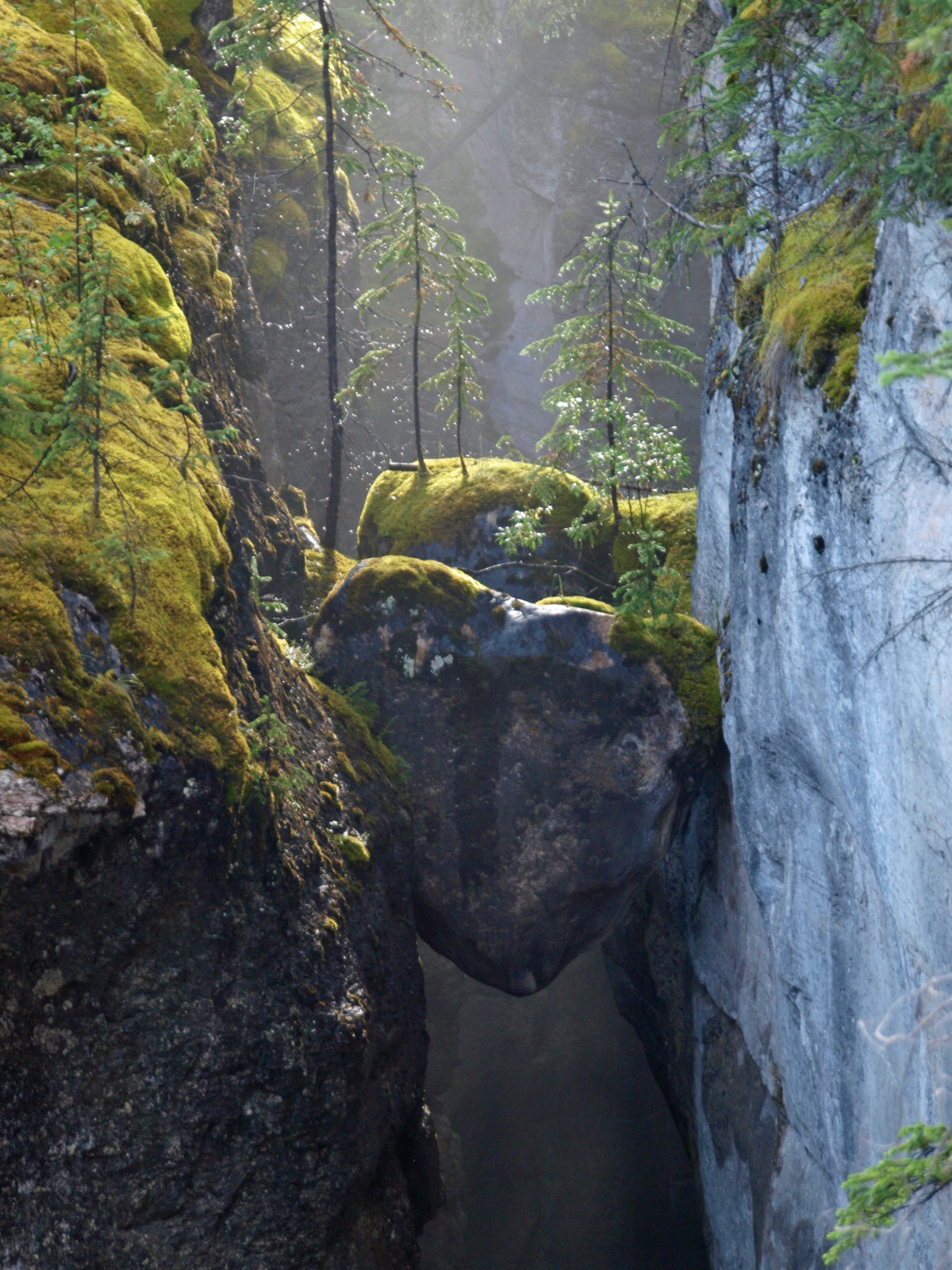
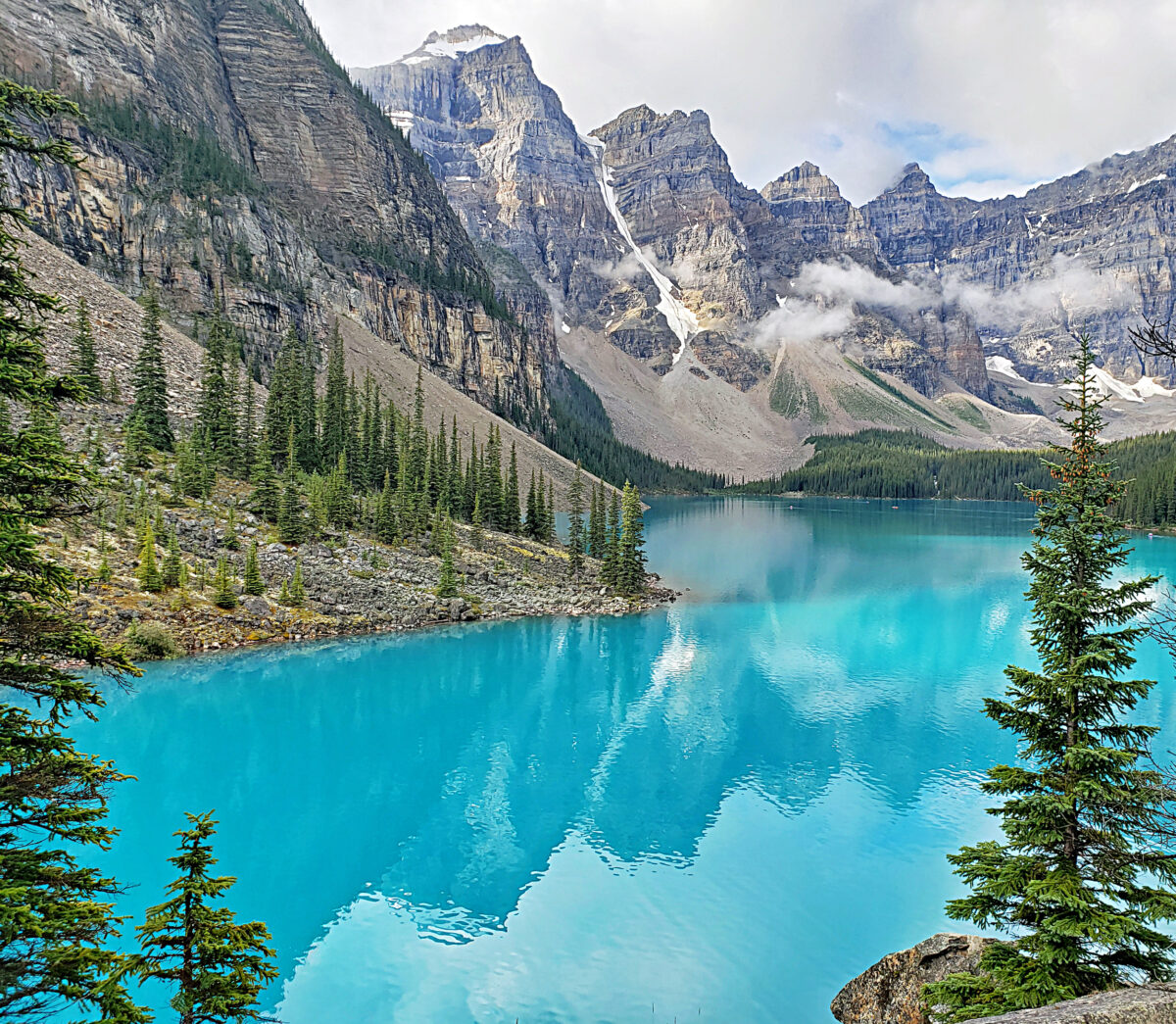

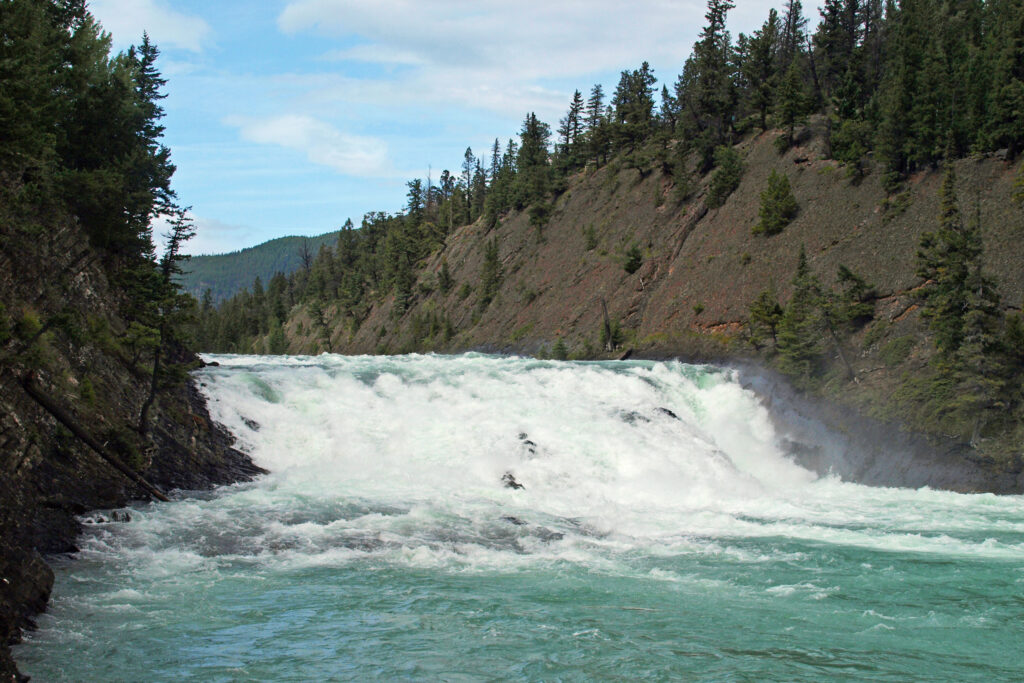
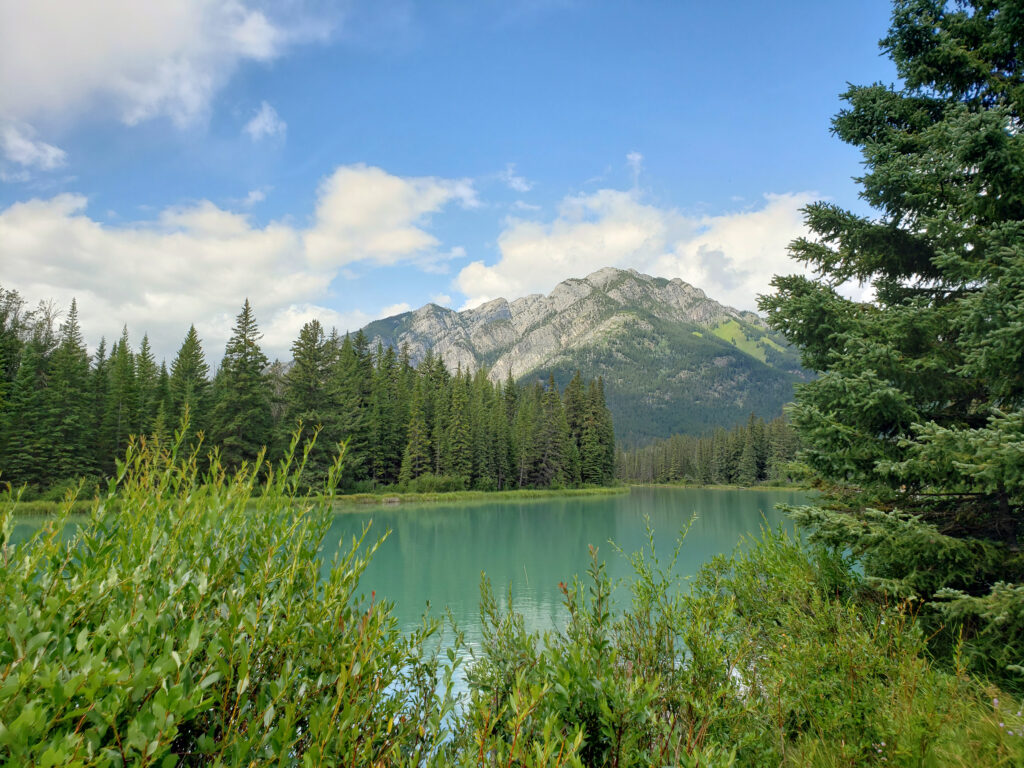

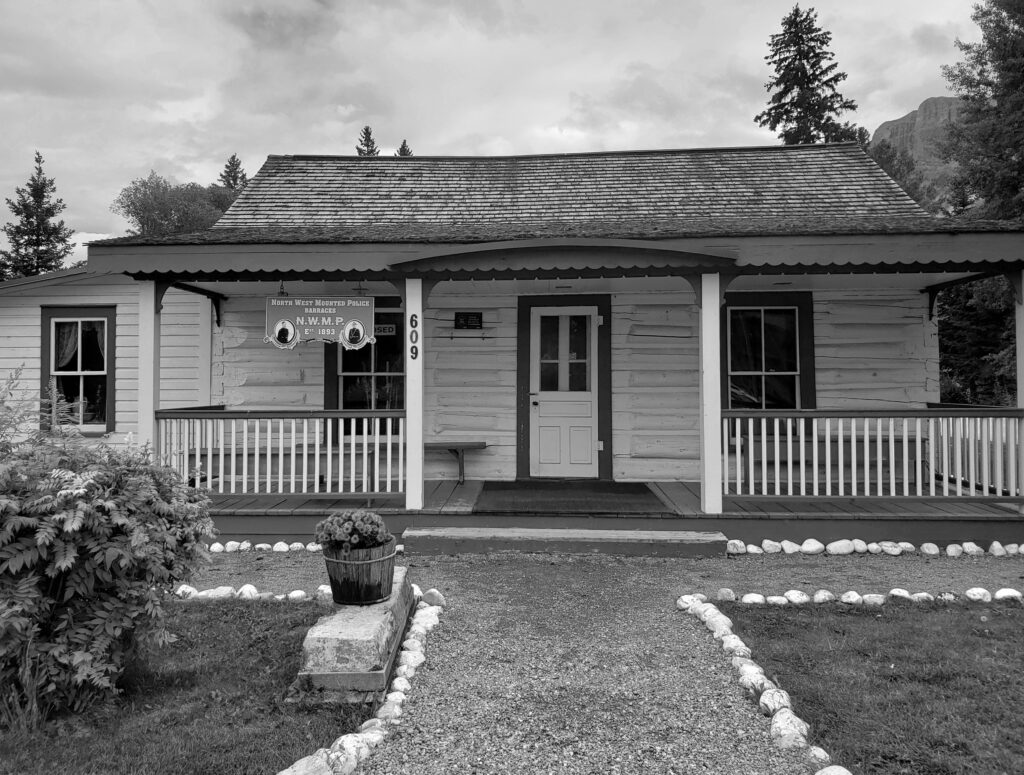
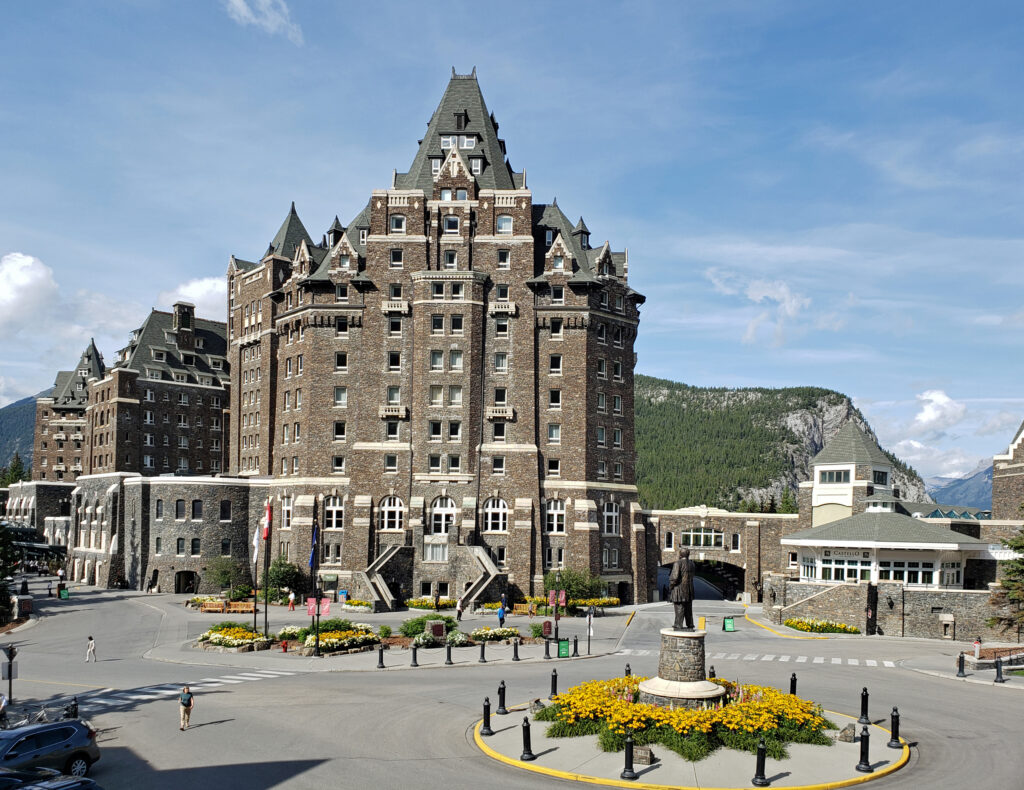



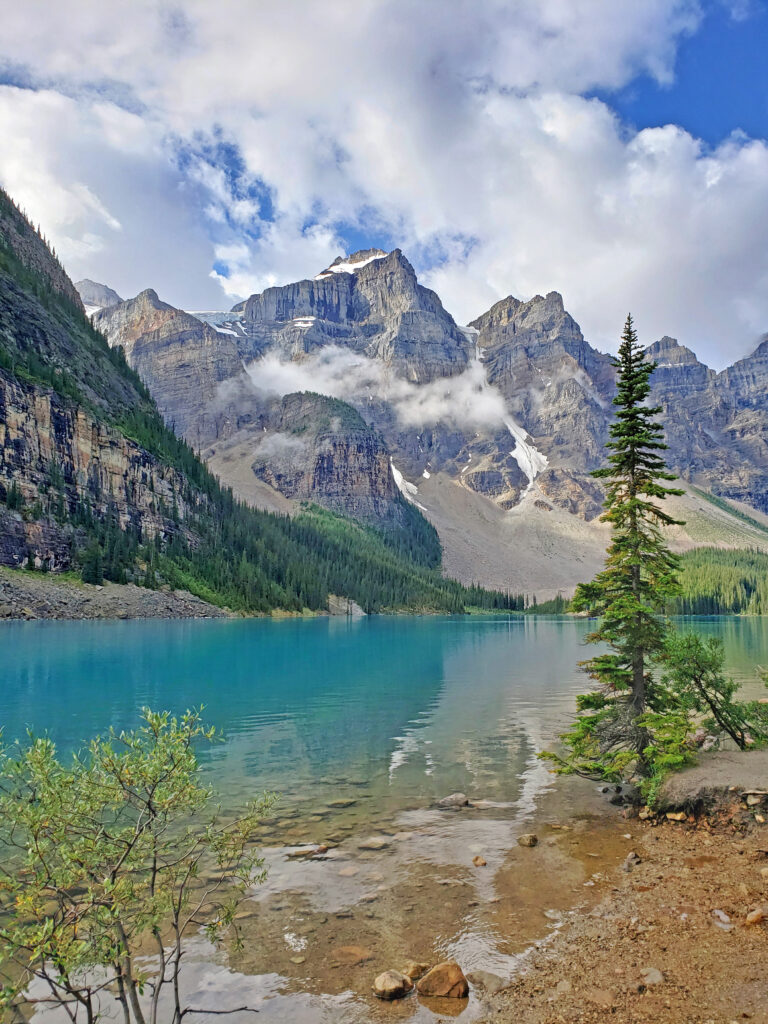
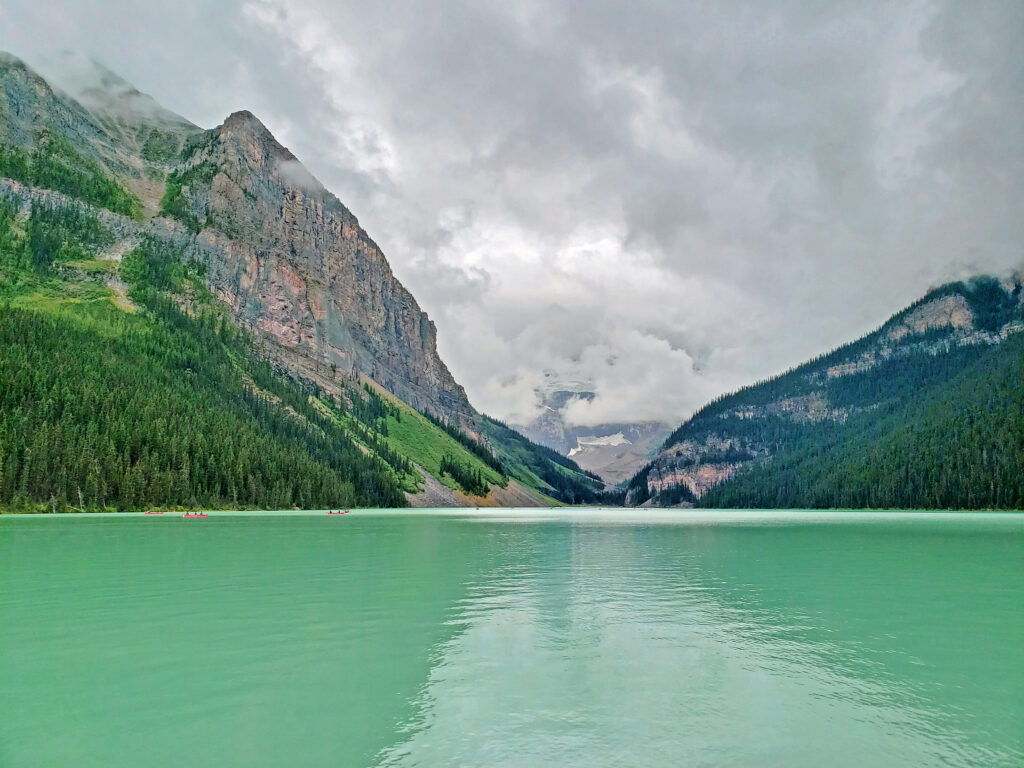
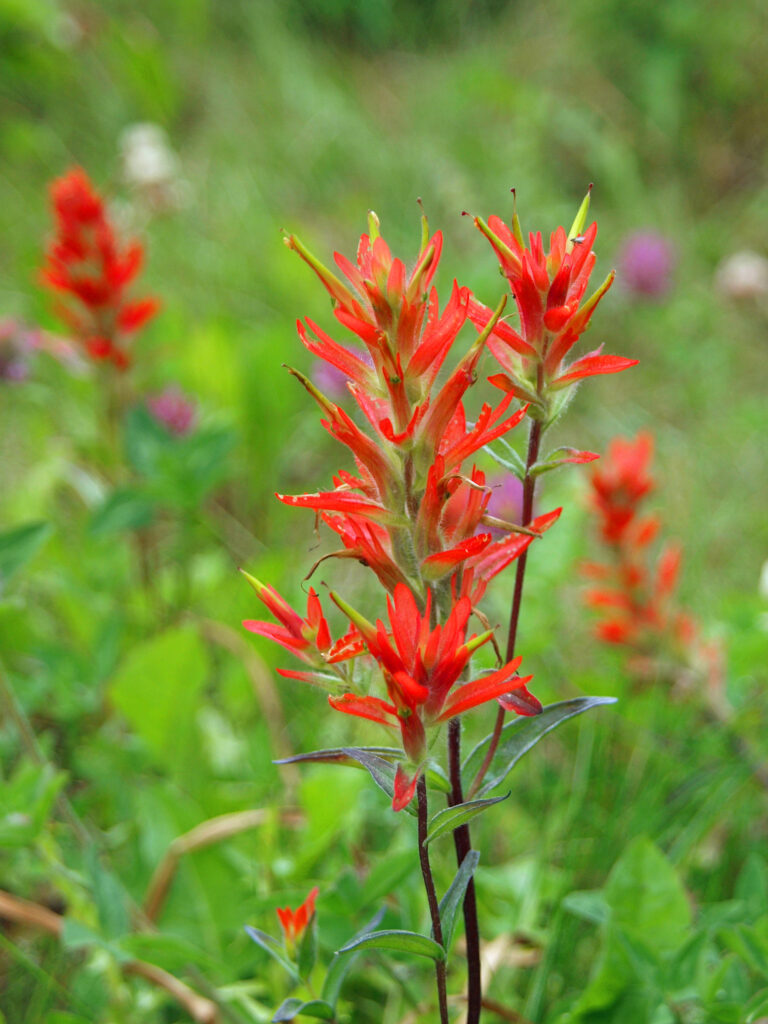

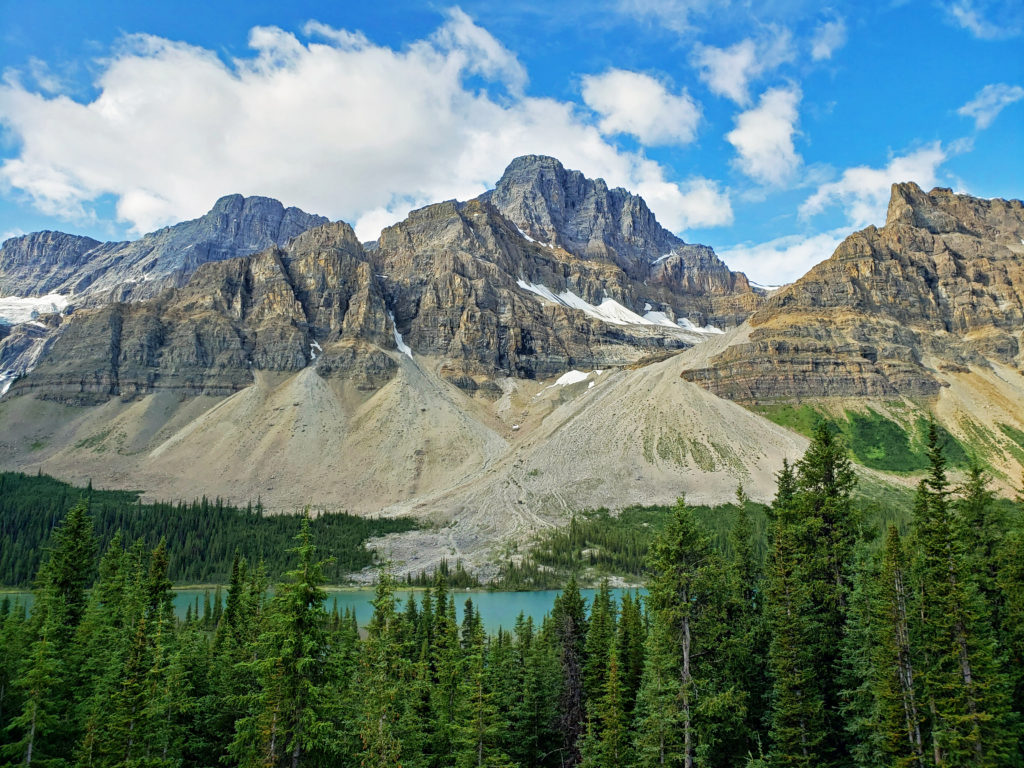
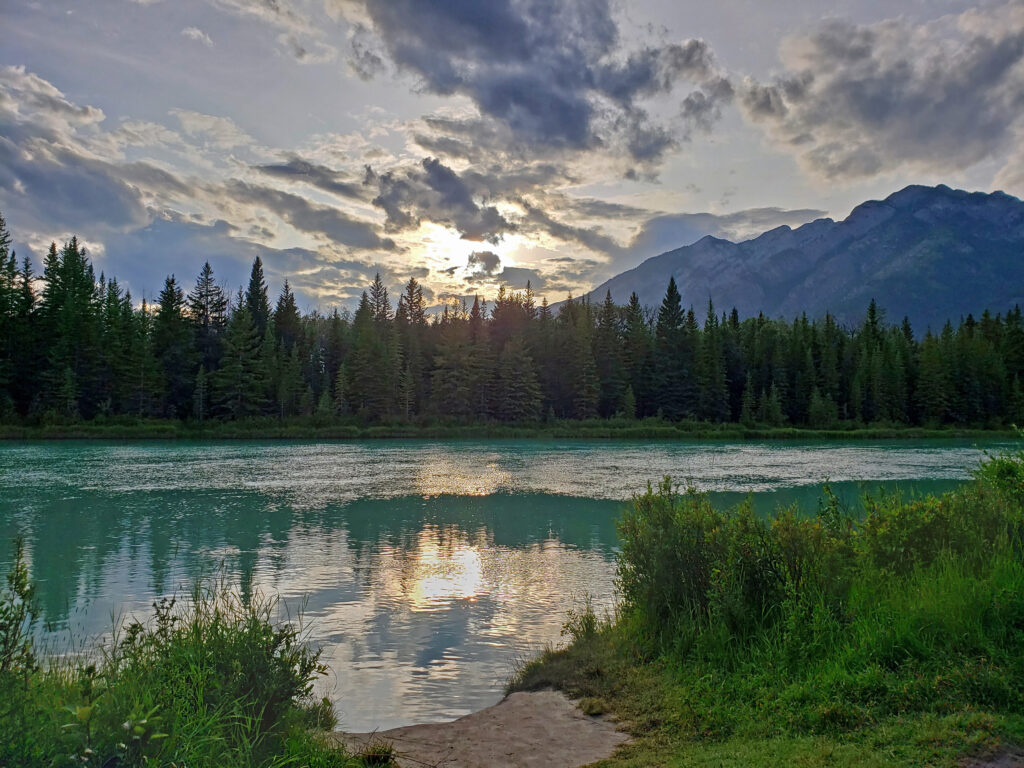
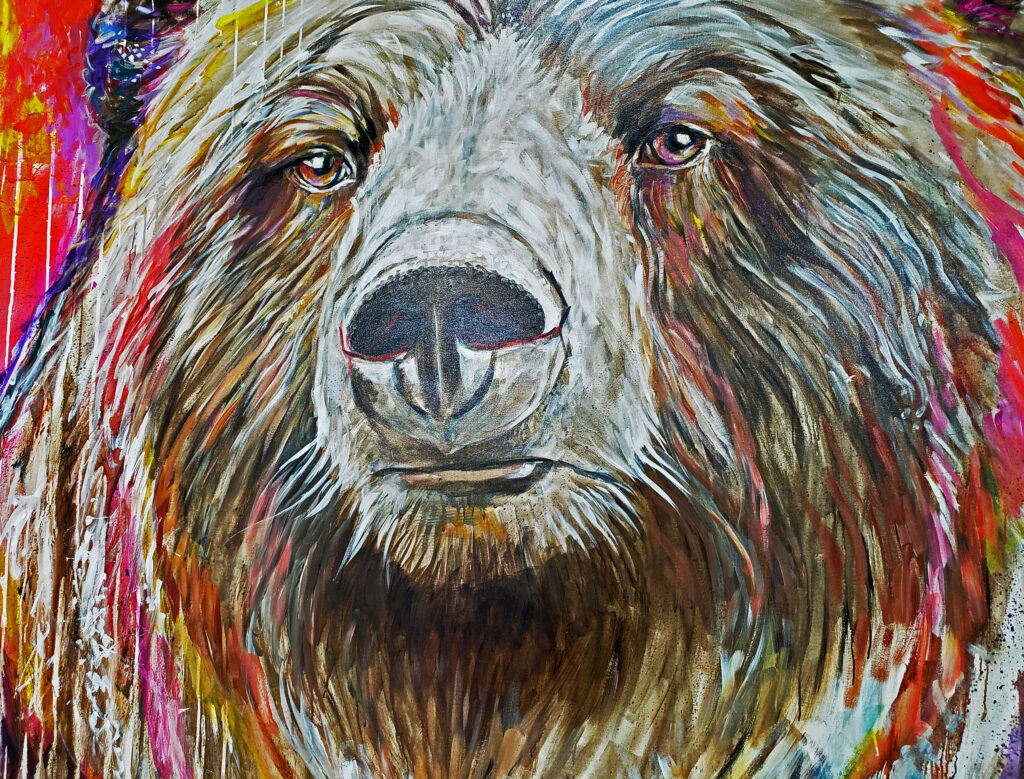
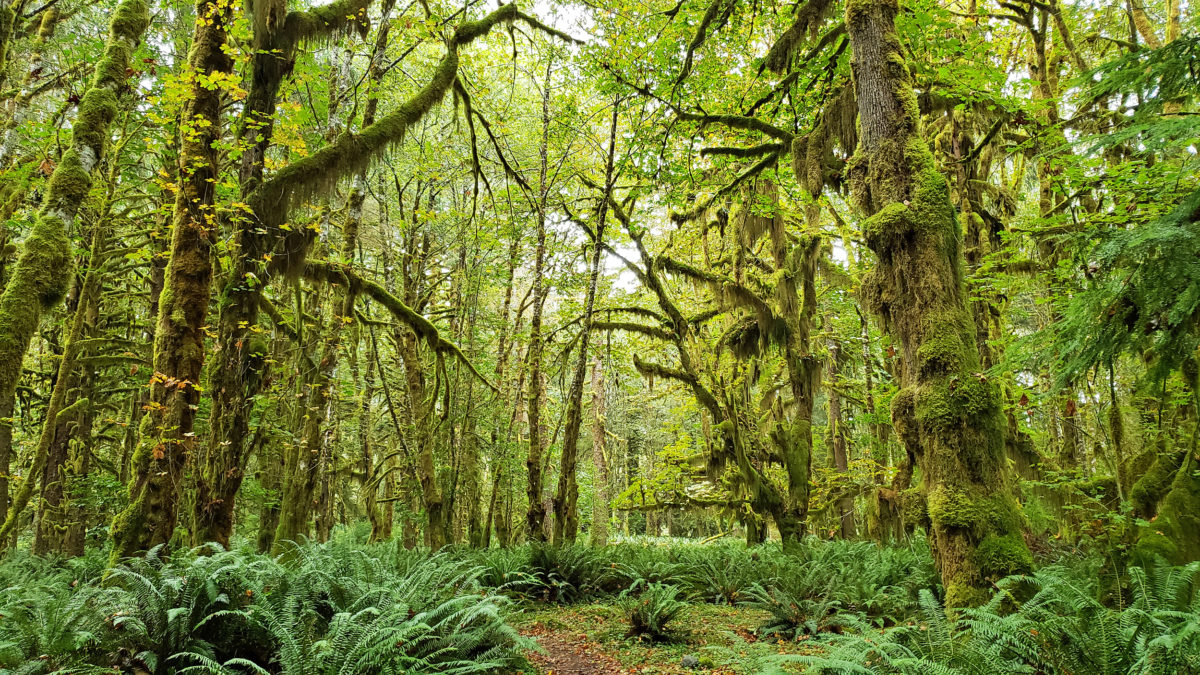
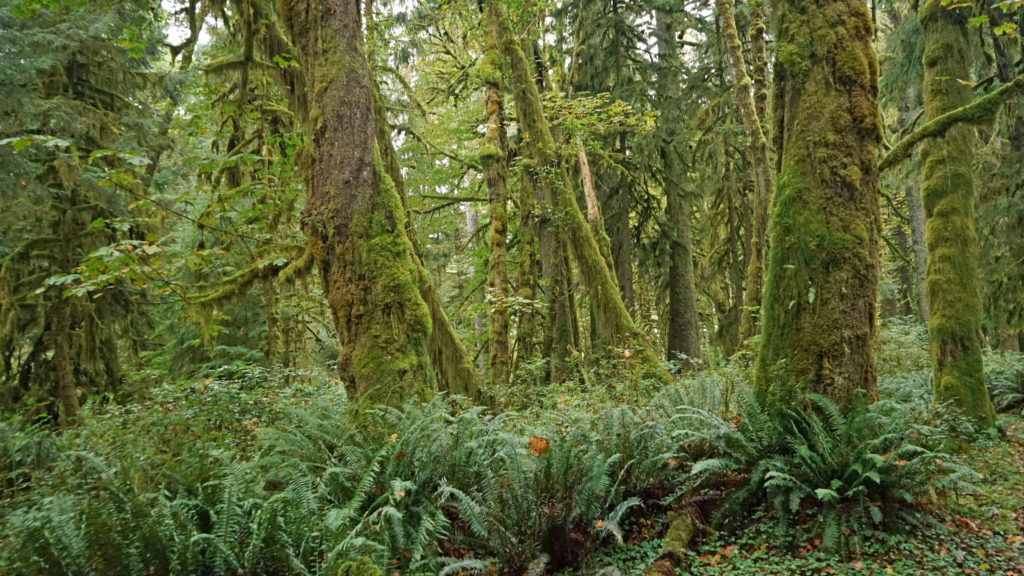 The Quinault Rain Forest lies in the southwestern corner of Olympic National Park, the adjacent Olympic National Forest, and the Quinault Indian Reservation in western Washington. It’s less than a four hour drive from either Portland or Seattle, but it seems a world apart, and more than a little stuck in time. It looks much as I remember it from when I first visited as a child more than a half century ago. Cell phone service and wi-fi availability are spotty. There are no big resorts and no towns of any size. Urban America is nowhere to be found.
The Quinault Rain Forest lies in the southwestern corner of Olympic National Park, the adjacent Olympic National Forest, and the Quinault Indian Reservation in western Washington. It’s less than a four hour drive from either Portland or Seattle, but it seems a world apart, and more than a little stuck in time. It looks much as I remember it from when I first visited as a child more than a half century ago. Cell phone service and wi-fi availability are spotty. There are no big resorts and no towns of any size. Urban America is nowhere to be found.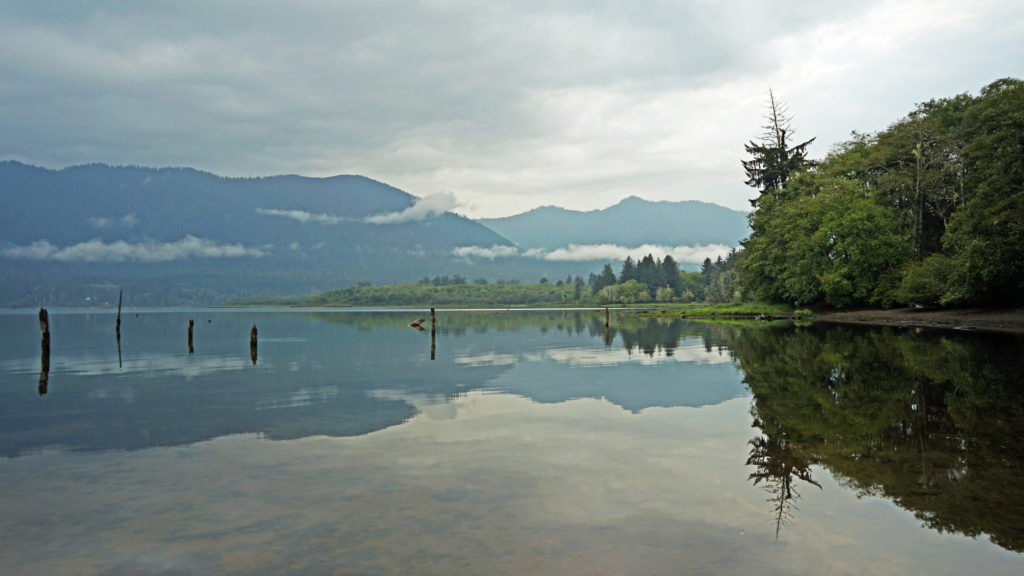 The pandemic has kept all of us from traveling as much as maybe we’d like. That certainly applies to my wife and I. Most of our vacation plans for 2020 had to be cancelled. And just when the parks and recreation areas were beginning to reopen, wildfires in western Oregon and Washington shut them down again. But the Olympic Peninsula was largely unaffected by the fires. So, my wife and I decided that the Olympics would be an ideal, and much needed, escape from Portland, and in September 2020 we headed to the Olympic Peninsula. Our first stop was Lake Quinault.
The pandemic has kept all of us from traveling as much as maybe we’d like. That certainly applies to my wife and I. Most of our vacation plans for 2020 had to be cancelled. And just when the parks and recreation areas were beginning to reopen, wildfires in western Oregon and Washington shut them down again. But the Olympic Peninsula was largely unaffected by the fires. So, my wife and I decided that the Olympics would be an ideal, and much needed, escape from Portland, and in September 2020 we headed to the Olympic Peninsula. Our first stop was Lake Quinault.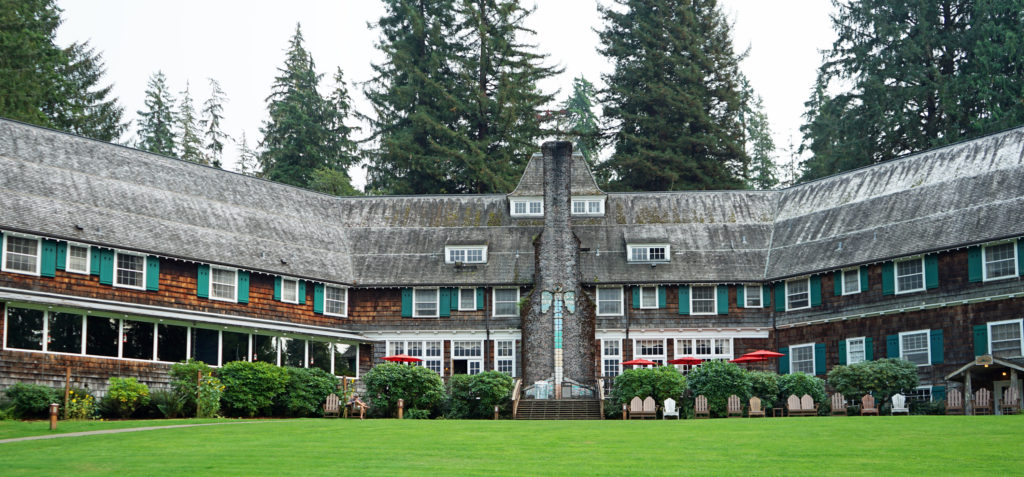 We treated ourselves to a stay at the historic Lake Quinault Lodge, one of the iconic grand lodges of the American West. The original Lake Quinault Lodge was built in 1904. The Boathouse annex was built in 1923. The original lodge burned down in 1924 and the current main lodge was constructed in 1926 on the site of the older lodge. Two additional annexes have been added since then. The existing lodge was placed on the National Register of Historic Places in 1998.
We treated ourselves to a stay at the historic Lake Quinault Lodge, one of the iconic grand lodges of the American West. The original Lake Quinault Lodge was built in 1904. The Boathouse annex was built in 1923. The original lodge burned down in 1924 and the current main lodge was constructed in 1926 on the site of the older lodge. Two additional annexes have been added since then. The existing lodge was placed on the National Register of Historic Places in 1998.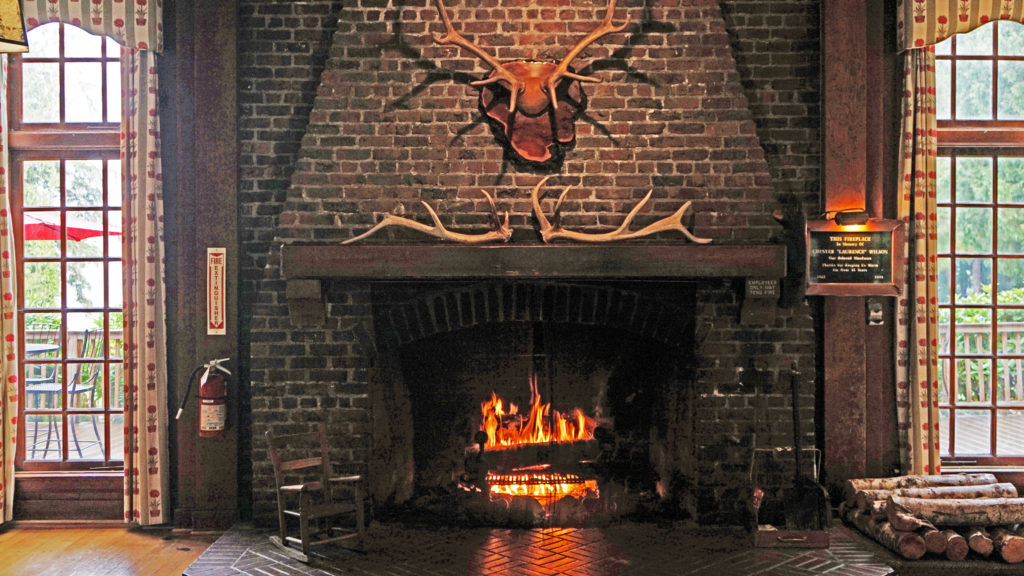 Rooms at the lodge are a little pricey, but you’re paying for the history, charm, and iconic nature of the lodge more than for the amenities provided. There are no TVs in any of the main lodge rooms, no fridges, or microwaves, no phones and no cell phone service. But that’s all part of the charm. The Boathouse and the other two annexes offer a few more amenities. Some come with fireplaces, the Lakeside Rooms are billed as family friendly, and the Boathouse Rooms are pet friendly. Our room in the main lodge came with all we needed, a comfortable bed and a view of the lake.
Rooms at the lodge are a little pricey, but you’re paying for the history, charm, and iconic nature of the lodge more than for the amenities provided. There are no TVs in any of the main lodge rooms, no fridges, or microwaves, no phones and no cell phone service. But that’s all part of the charm. The Boathouse and the other two annexes offer a few more amenities. Some come with fireplaces, the Lakeside Rooms are billed as family friendly, and the Boathouse Rooms are pet friendly. Our room in the main lodge came with all we needed, a comfortable bed and a view of the lake.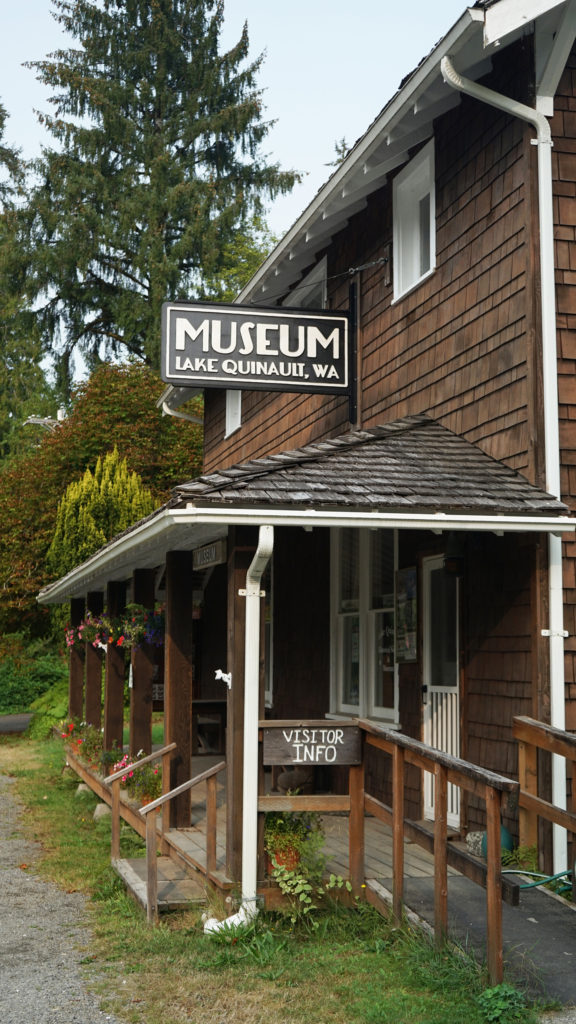 Services at the lodge were limited by the pandemic during our stay. The swimming pool, sauna, and game room were closed. The restaurant served take out meals, but the dining room was closed (outside seating was available and you could eat in the main hall or in your room). However, all services have been restored to pre-pandemic levels.
Services at the lodge were limited by the pandemic during our stay. The swimming pool, sauna, and game room were closed. The restaurant served take out meals, but the dining room was closed (outside seating was available and you could eat in the main hall or in your room). However, all services have been restored to pre-pandemic levels.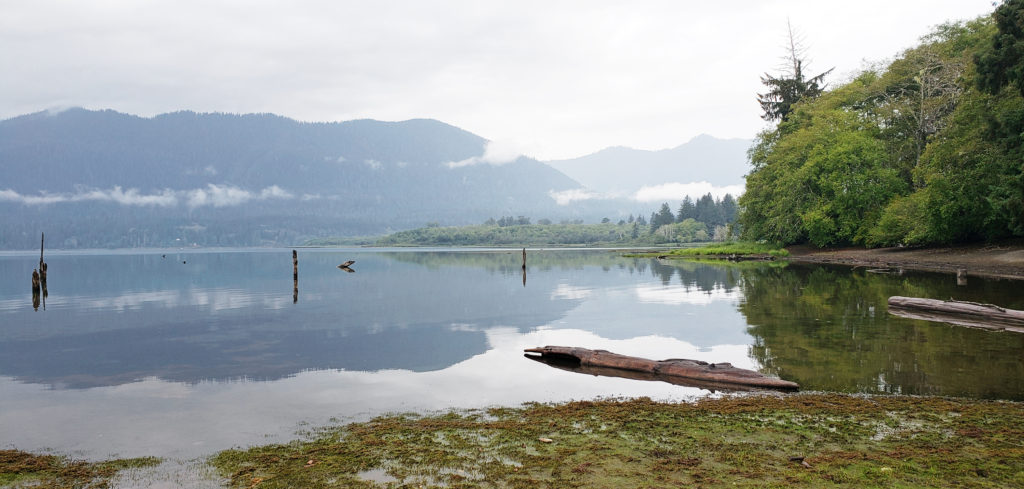 A somewhat cheaper alternative to Lake Quinault Lodge is the nearby Rain Forest Resort, which has a 16 room lodge, cabins (some with hot tubs), an RV park, and a restaurant. The world’s largest Sitka Spruce grows a short walk from the resort. Other options are the Quinault River Inn on Hwy 101 in Amanda Park, and Lochaerie Resort on North Shore Road. And there are three campgrounds on the south shore of Lake Quinault, and two (one a walk-in) on the north shore.
A somewhat cheaper alternative to Lake Quinault Lodge is the nearby Rain Forest Resort, which has a 16 room lodge, cabins (some with hot tubs), an RV park, and a restaurant. The world’s largest Sitka Spruce grows a short walk from the resort. Other options are the Quinault River Inn on Hwy 101 in Amanda Park, and Lochaerie Resort on North Shore Road. And there are three campgrounds on the south shore of Lake Quinault, and two (one a walk-in) on the north shore.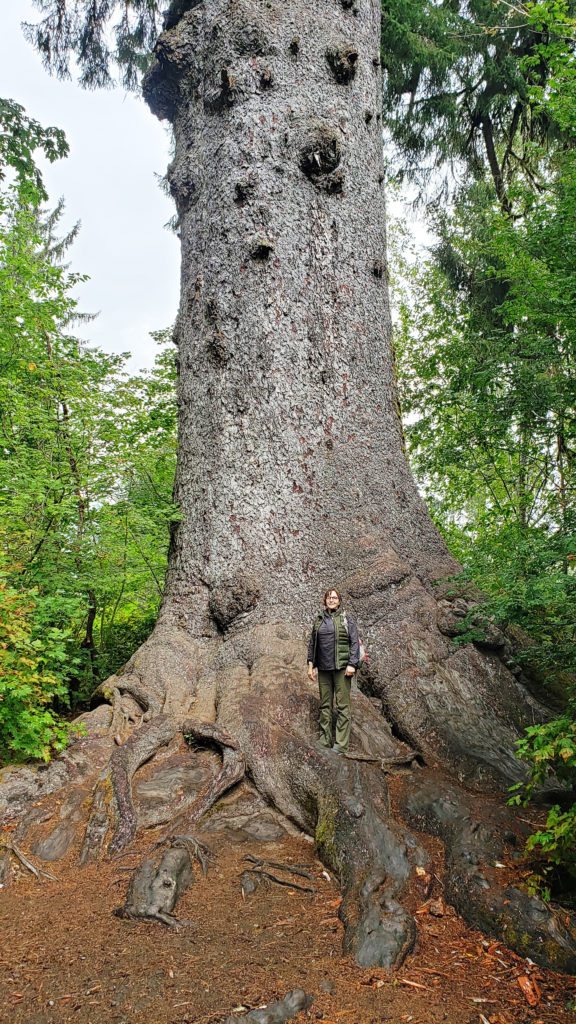 Lake Quinault Lodge, the Rain Forest Resort, or any of the three south shore campgrounds make an ideal base for exploring the area. Hikers have a variety of options, from the half mile Rain Forest Nature Trail Loop to a loop of about seven miles that takes you to Gatton Creek Falls, Cascade Falls, the Cedar Bog, the Rain Forest Nature Trail, and along the lake shore. Cutoff trails make shorter loops of various distances possible. Other hiking trails are a short drive from the lodge.
Lake Quinault Lodge, the Rain Forest Resort, or any of the three south shore campgrounds make an ideal base for exploring the area. Hikers have a variety of options, from the half mile Rain Forest Nature Trail Loop to a loop of about seven miles that takes you to Gatton Creek Falls, Cascade Falls, the Cedar Bog, the Rain Forest Nature Trail, and along the lake shore. Cutoff trails make shorter loops of various distances possible. Other hiking trails are a short drive from the lodge.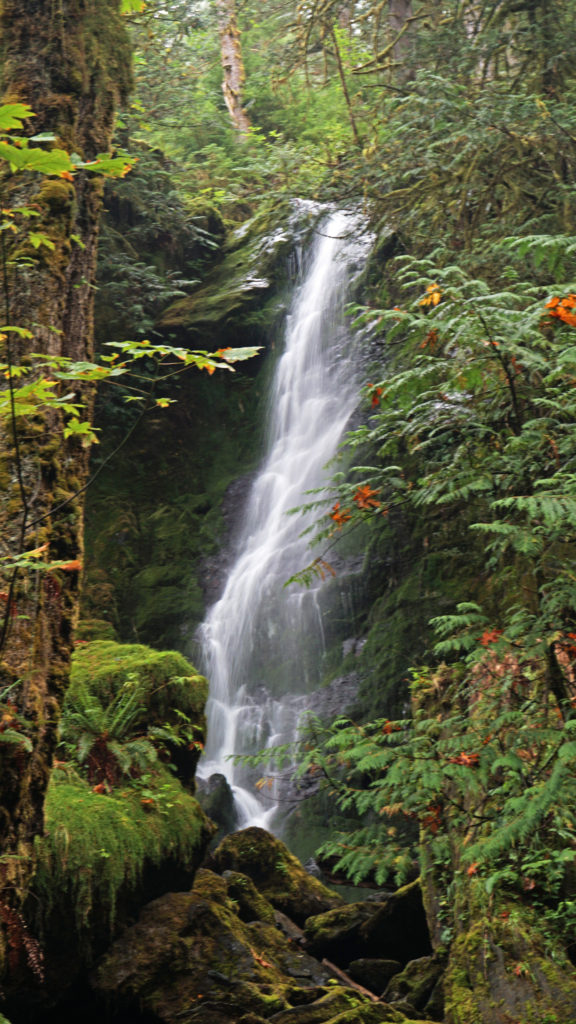 Two stops along South Shore Road worth making are Merriman Falls and Bunch Falls. Both are just east of Lake Quinault and both are right by the road, so no hiking required.
Two stops along South Shore Road worth making are Merriman Falls and Bunch Falls. Both are just east of Lake Quinault and both are right by the road, so no hiking required.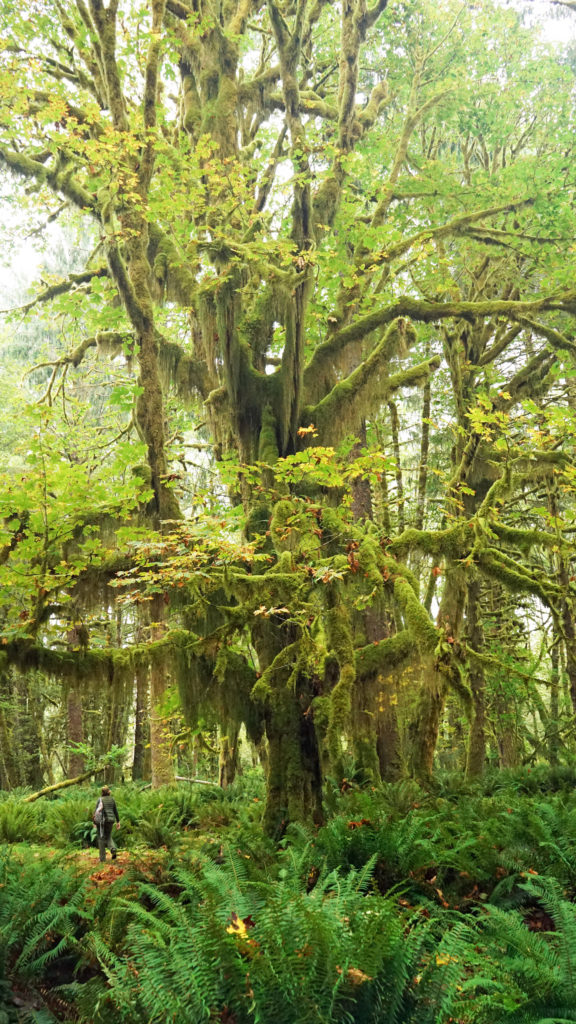
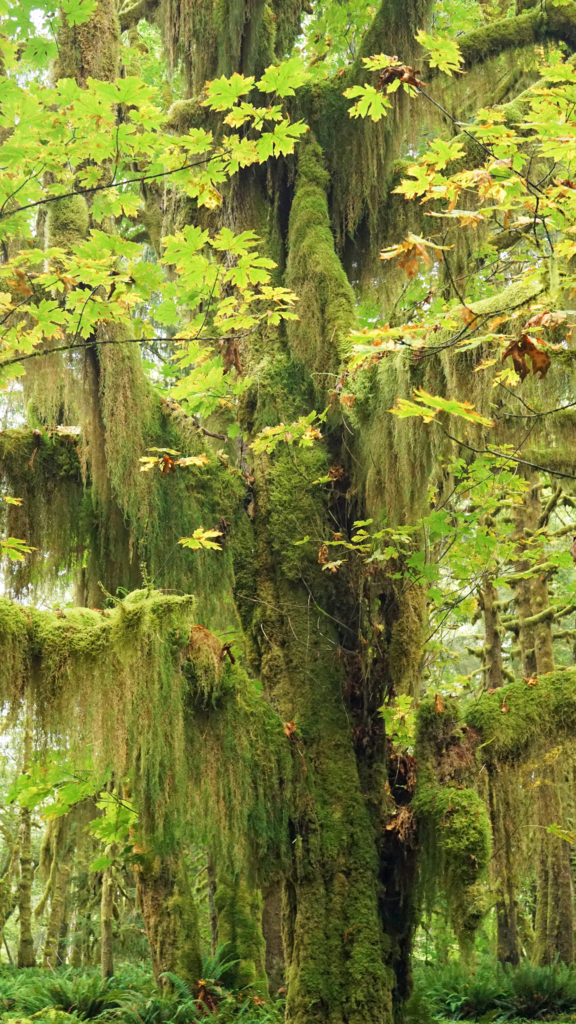 One hike that everyone should do is the Maple Glade Trail at the Quinault River Ranger Station on North Shore Road. It is spectacularly beautiful, and like the Rain Forest Nature Trail, it’s an easy 0.5 mile loop. But, unlike the Rain Forest Nature Trail, which takes you through a coniferous forest of Douglas Fir, Western Hemlock, and Western Red Cedar, the Maple Glade Trail immerses you in a Bigleaf Maple forest. There the ground is covered in ferns and other low growing shrubs and the maples soar overhead, but in between is mostly open and airy. The effect is like being in a gigantic room carpeted with ferns and roofed with a canopy of maple leaves.
One hike that everyone should do is the Maple Glade Trail at the Quinault River Ranger Station on North Shore Road. It is spectacularly beautiful, and like the Rain Forest Nature Trail, it’s an easy 0.5 mile loop. But, unlike the Rain Forest Nature Trail, which takes you through a coniferous forest of Douglas Fir, Western Hemlock, and Western Red Cedar, the Maple Glade Trail immerses you in a Bigleaf Maple forest. There the ground is covered in ferns and other low growing shrubs and the maples soar overhead, but in between is mostly open and airy. The effect is like being in a gigantic room carpeted with ferns and roofed with a canopy of maple leaves.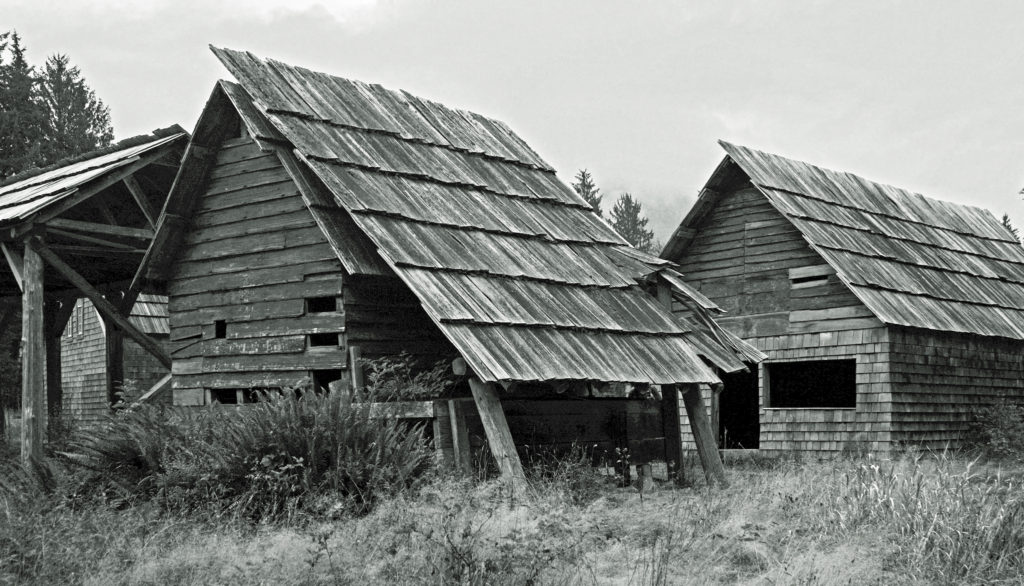 The Maple Glade Trail can be extended by taking the connecting trail to the Kestner Homestead. There you’ll find the Kestner house, barn, outbuildings, and a cool old rusted delivery truck.
The Maple Glade Trail can be extended by taking the connecting trail to the Kestner Homestead. There you’ll find the Kestner house, barn, outbuildings, and a cool old rusted delivery truck.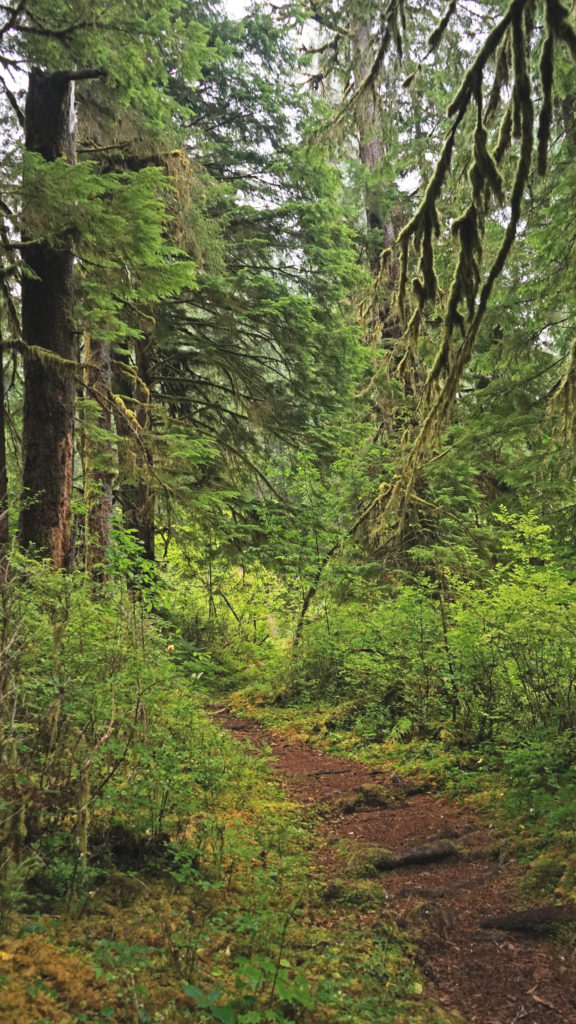
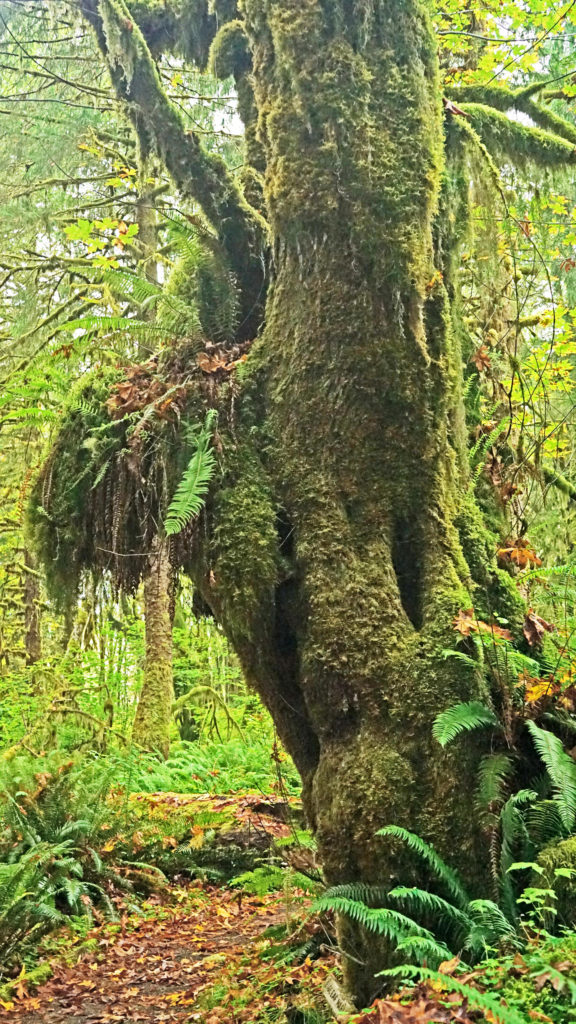 There are also much longer hikes that can be taken into the Olympic National Park from the Quinault Valley. The most famous, and probably most hiked, is the Enchanted Valley Trail. It’s a 13 mile hike along the East Fork of the Quinault River to reach the Enchanted Valley, so it is not a casual outing. Most people do it as a 3-5 day backpacking trip. My backpacking days are behind me, but the Enchanted Valley is one of the hikes that I regret having never done.
There are also much longer hikes that can be taken into the Olympic National Park from the Quinault Valley. The most famous, and probably most hiked, is the Enchanted Valley Trail. It’s a 13 mile hike along the East Fork of the Quinault River to reach the Enchanted Valley, so it is not a casual outing. Most people do it as a 3-5 day backpacking trip. My backpacking days are behind me, but the Enchanted Valley is one of the hikes that I regret having never done.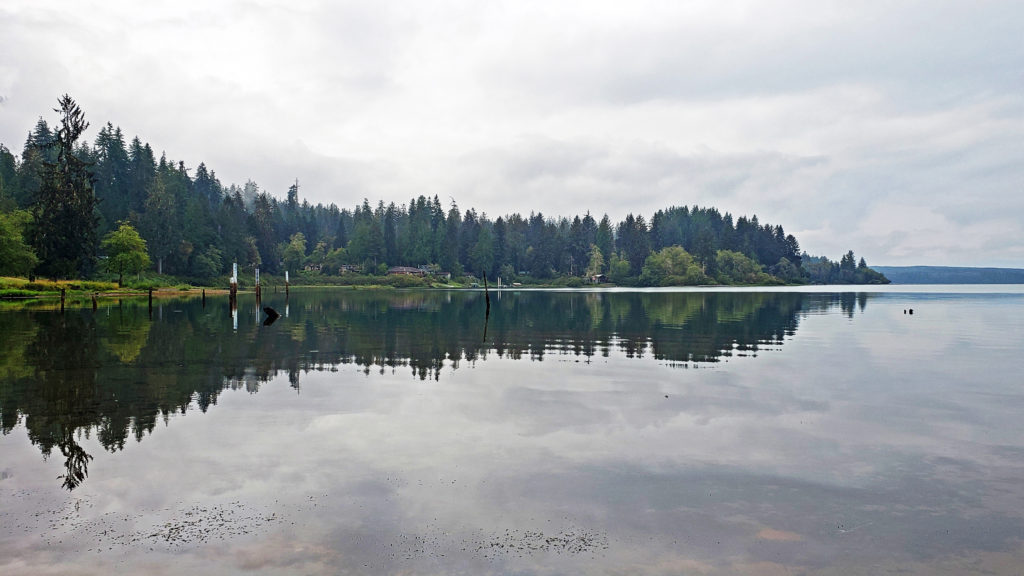
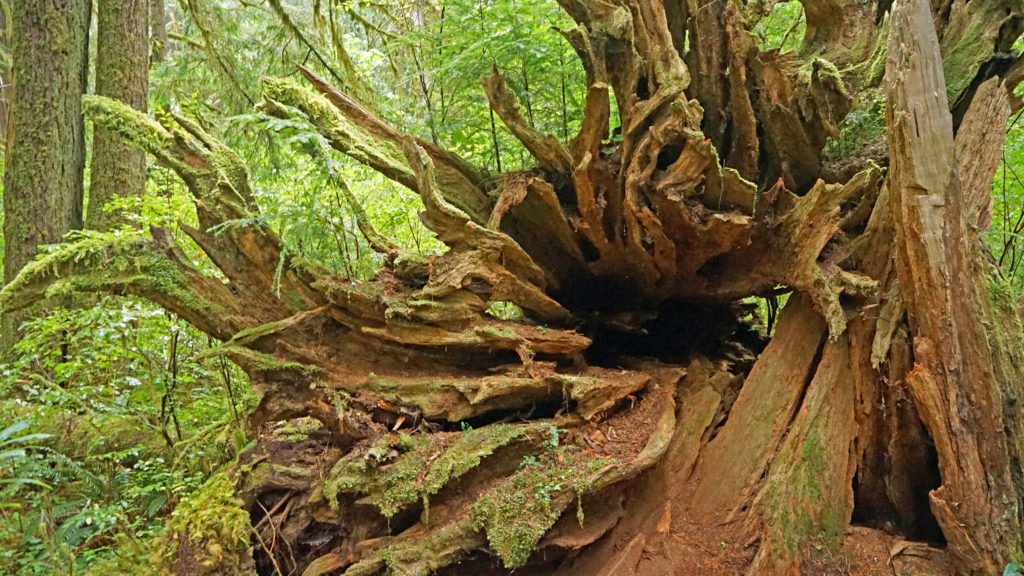
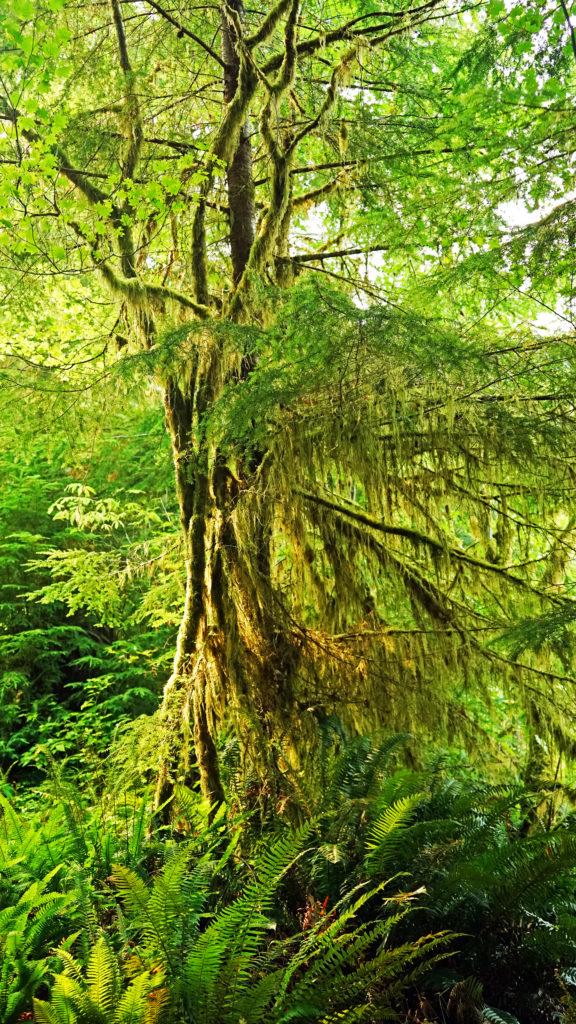 Originally posted October 26, 2020. Updated and re-posted August 11, 2022.
Originally posted October 26, 2020. Updated and re-posted August 11, 2022.